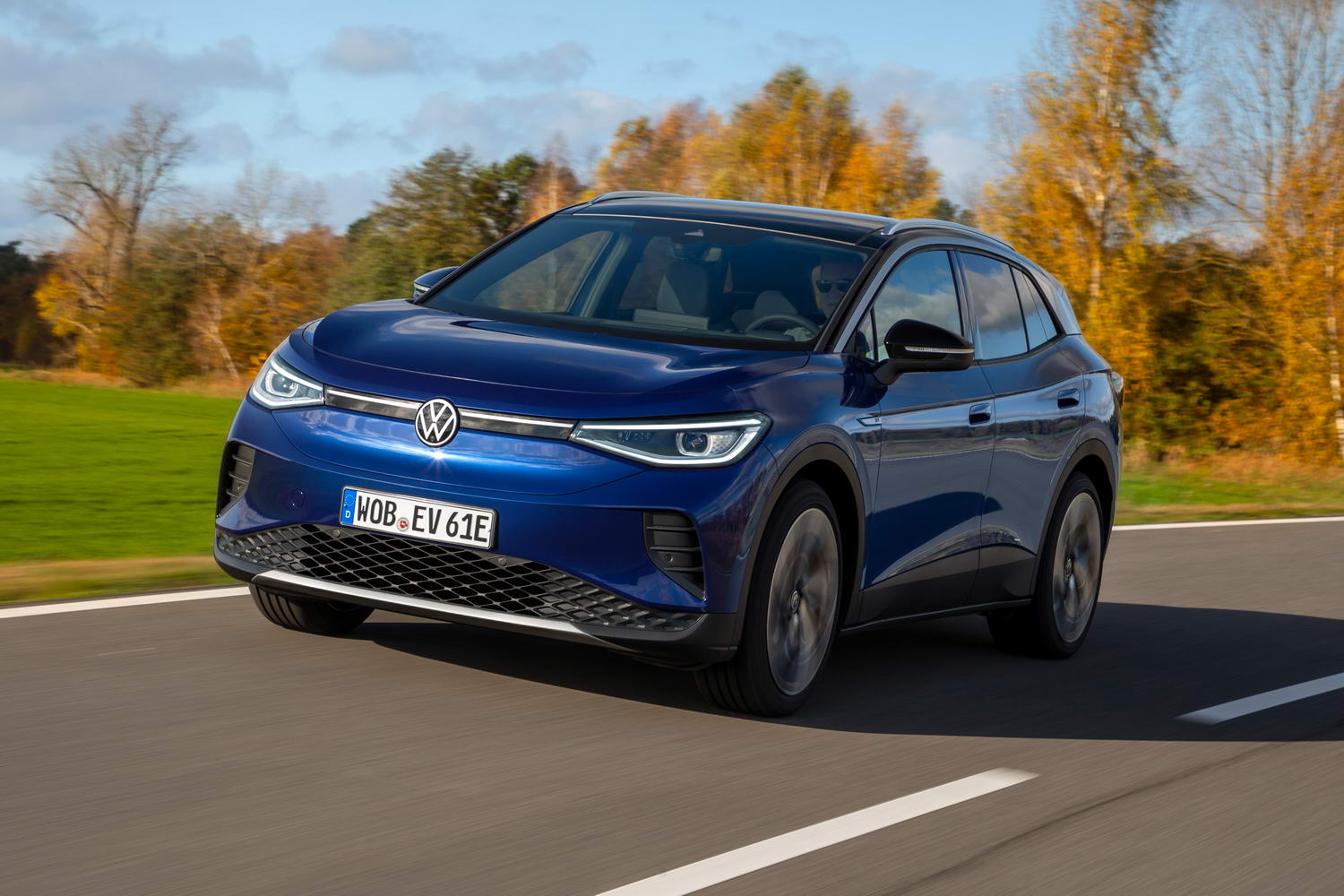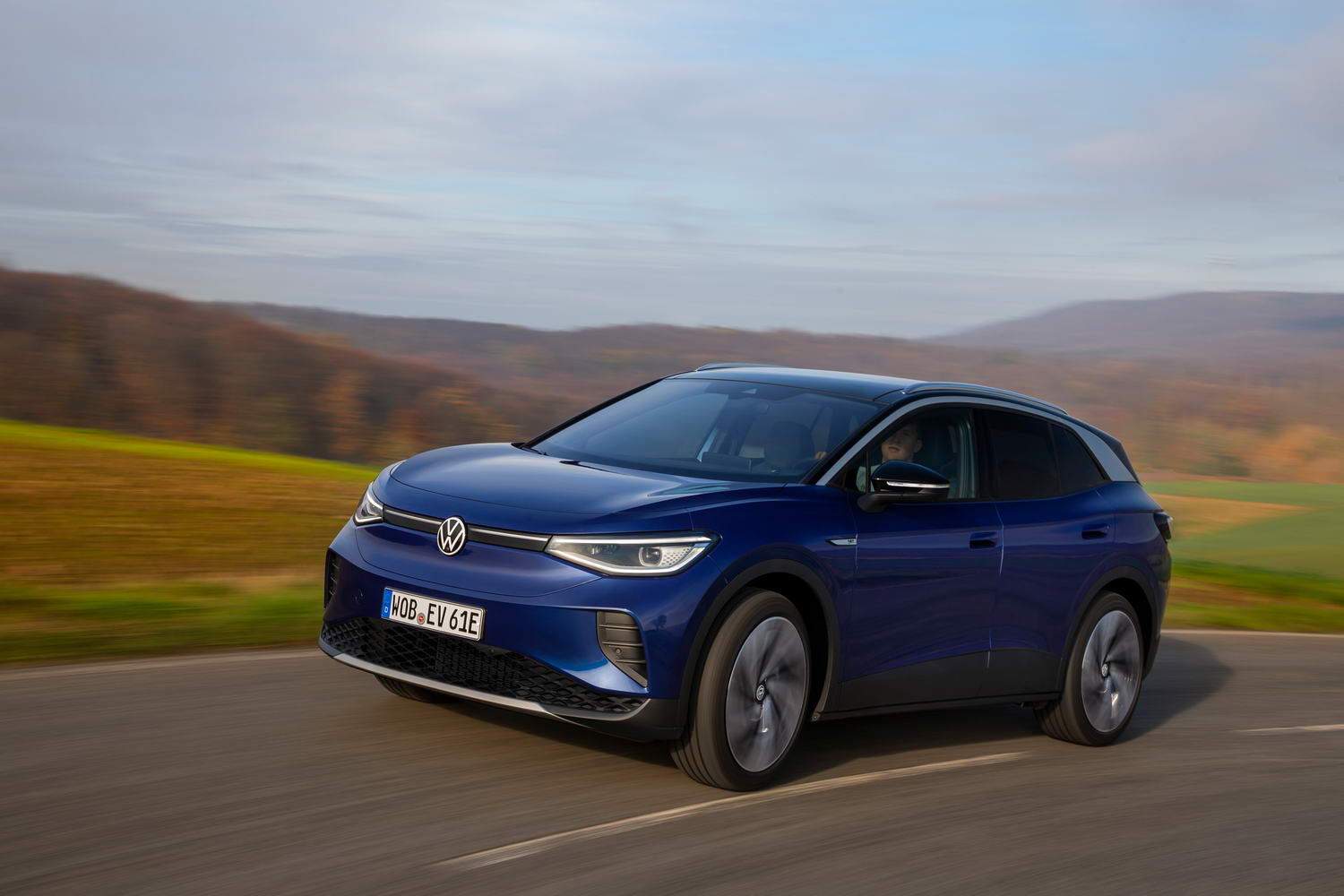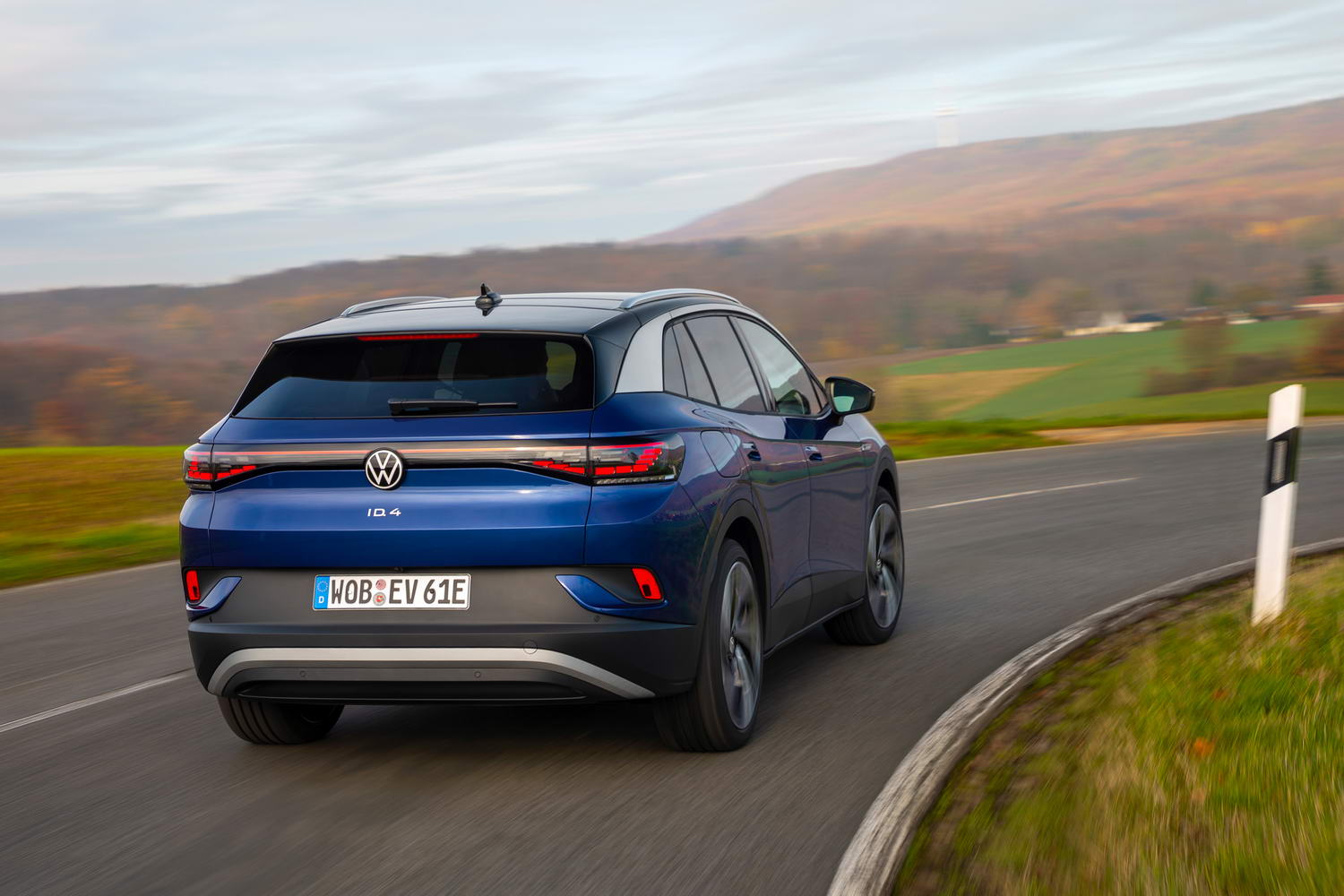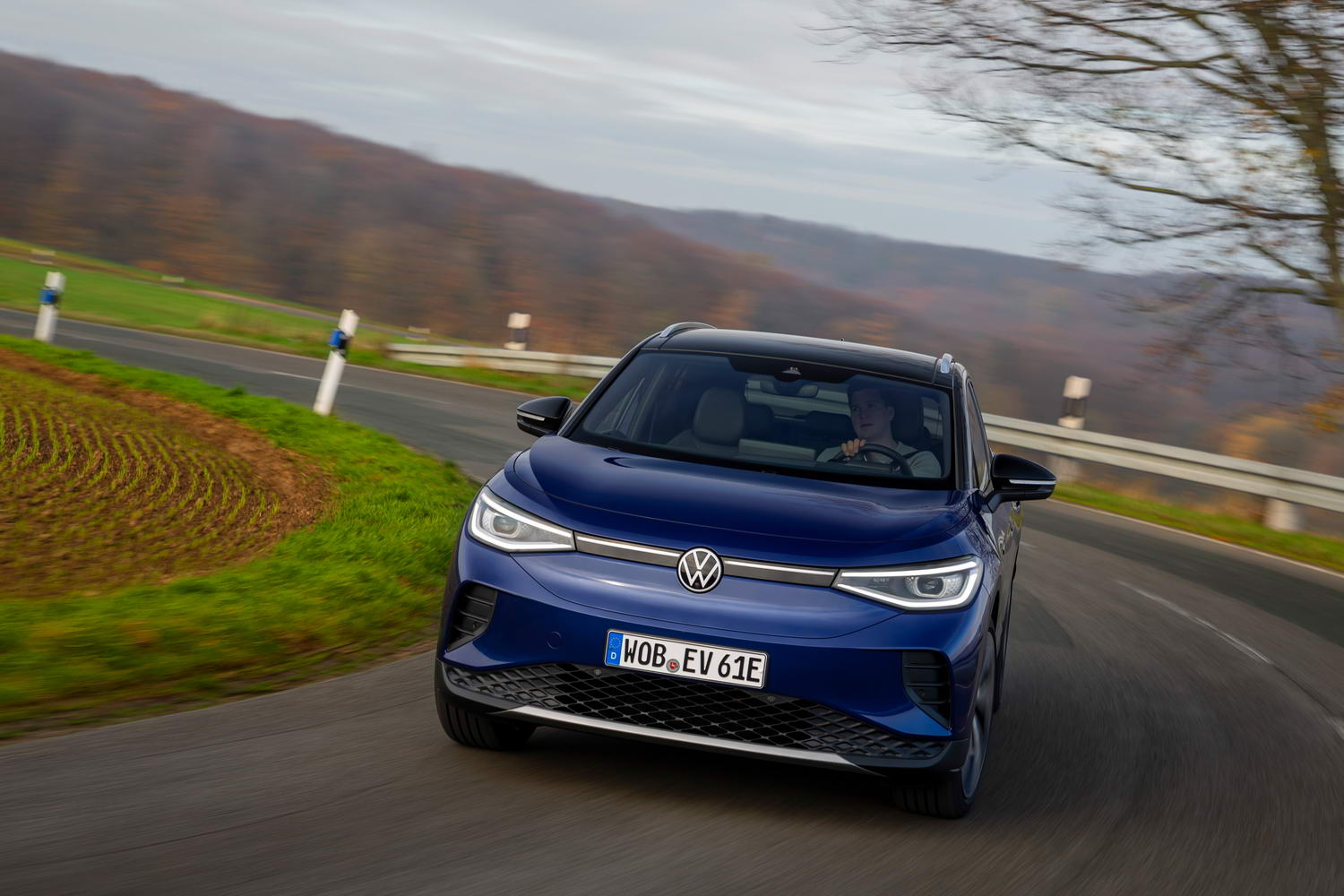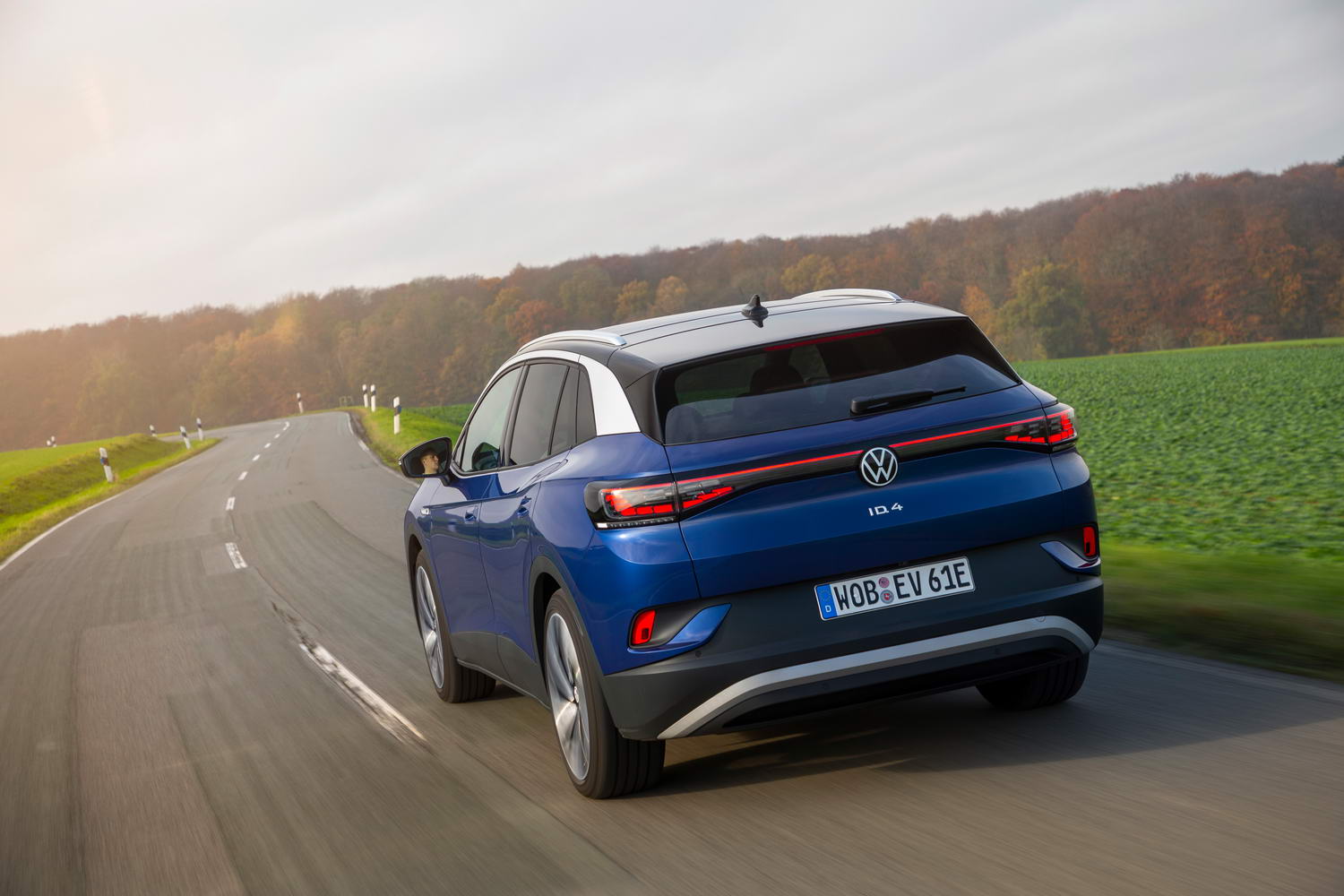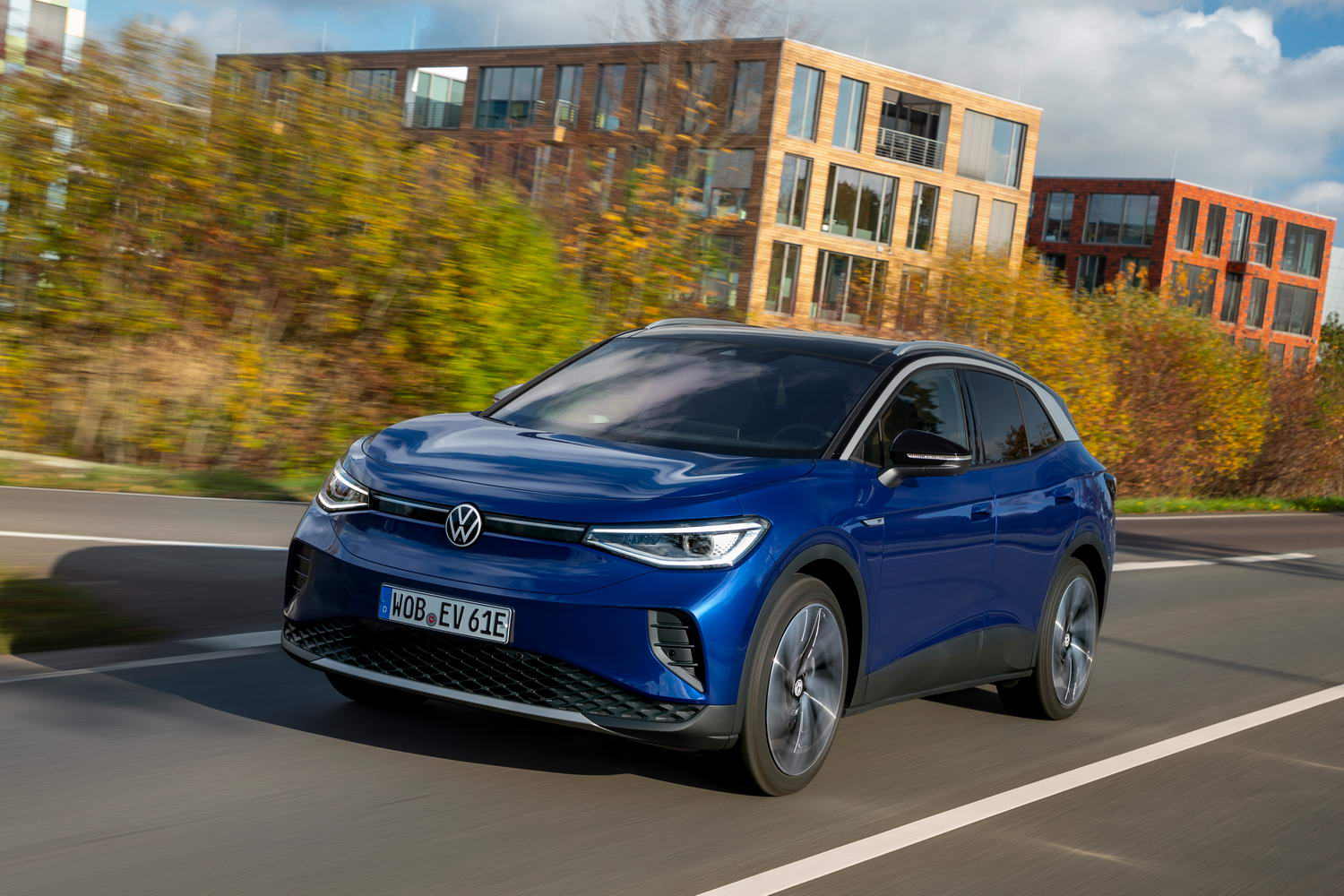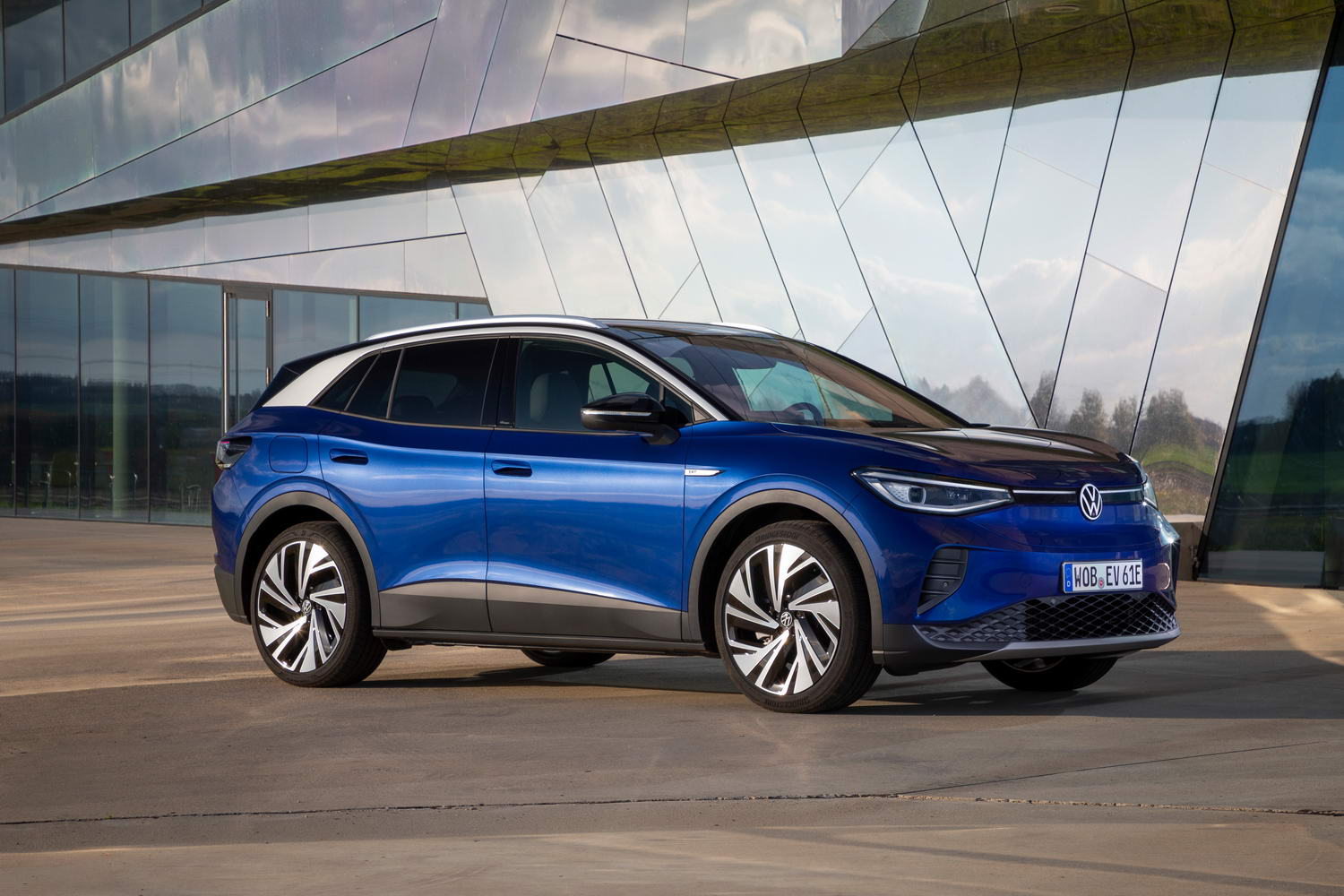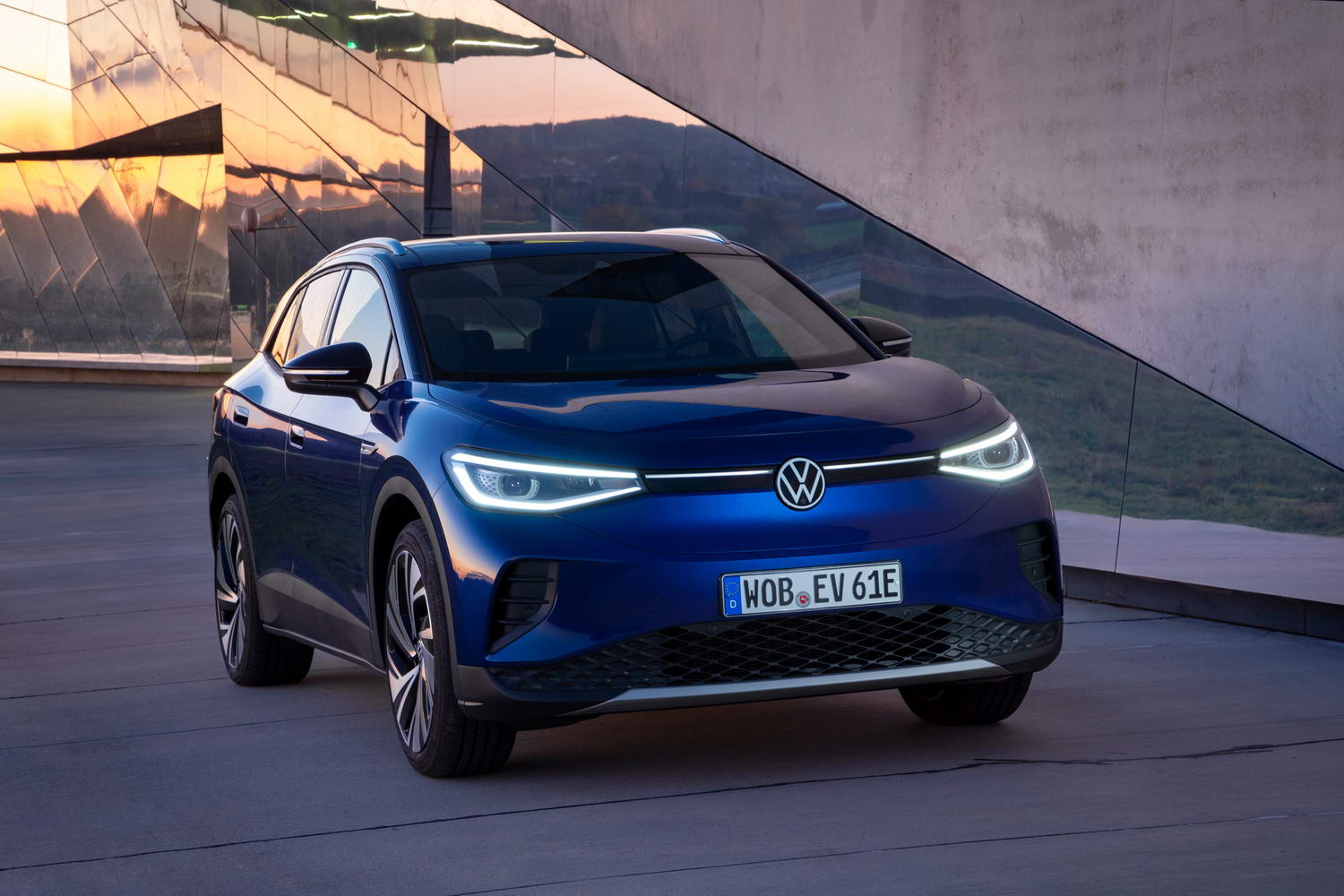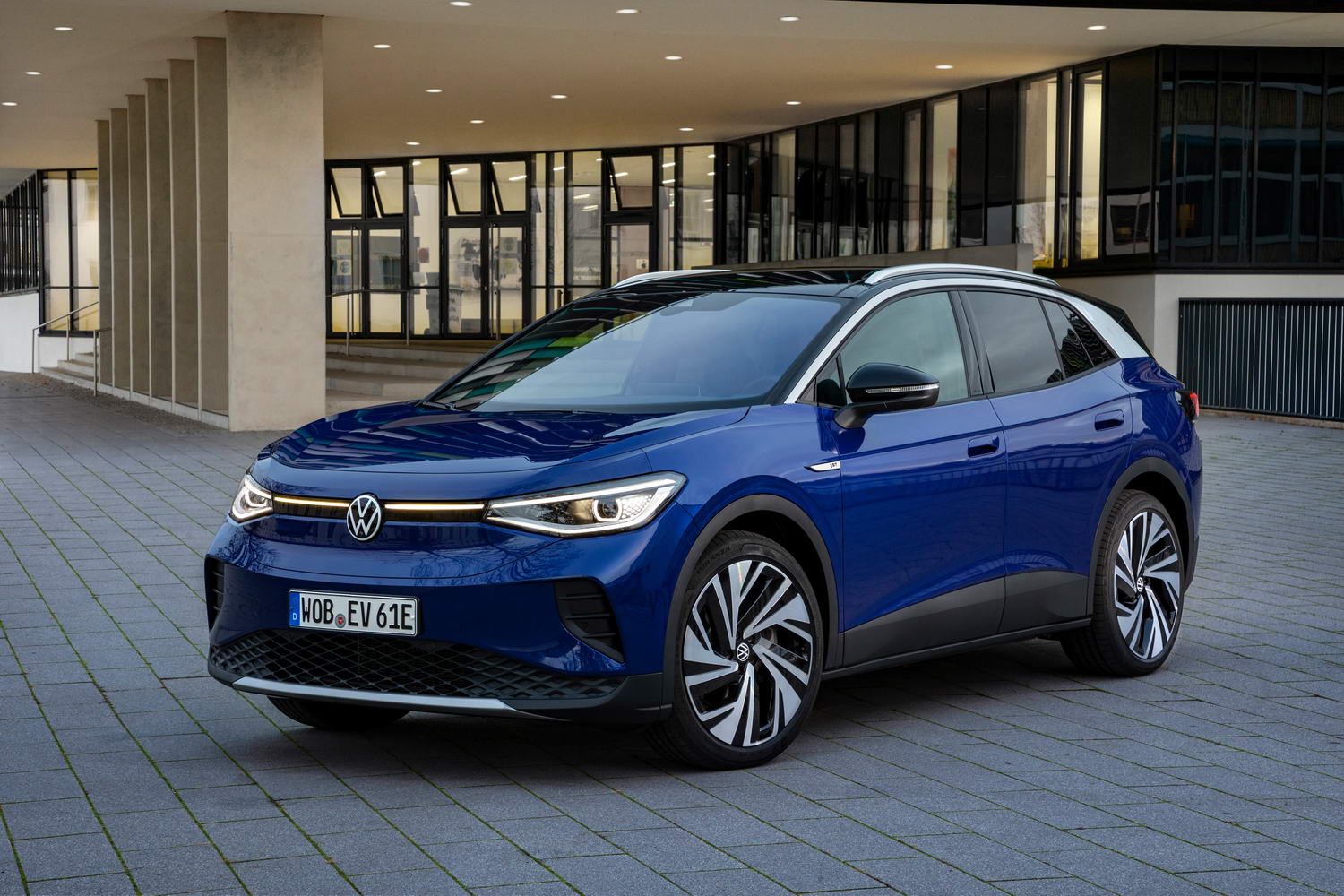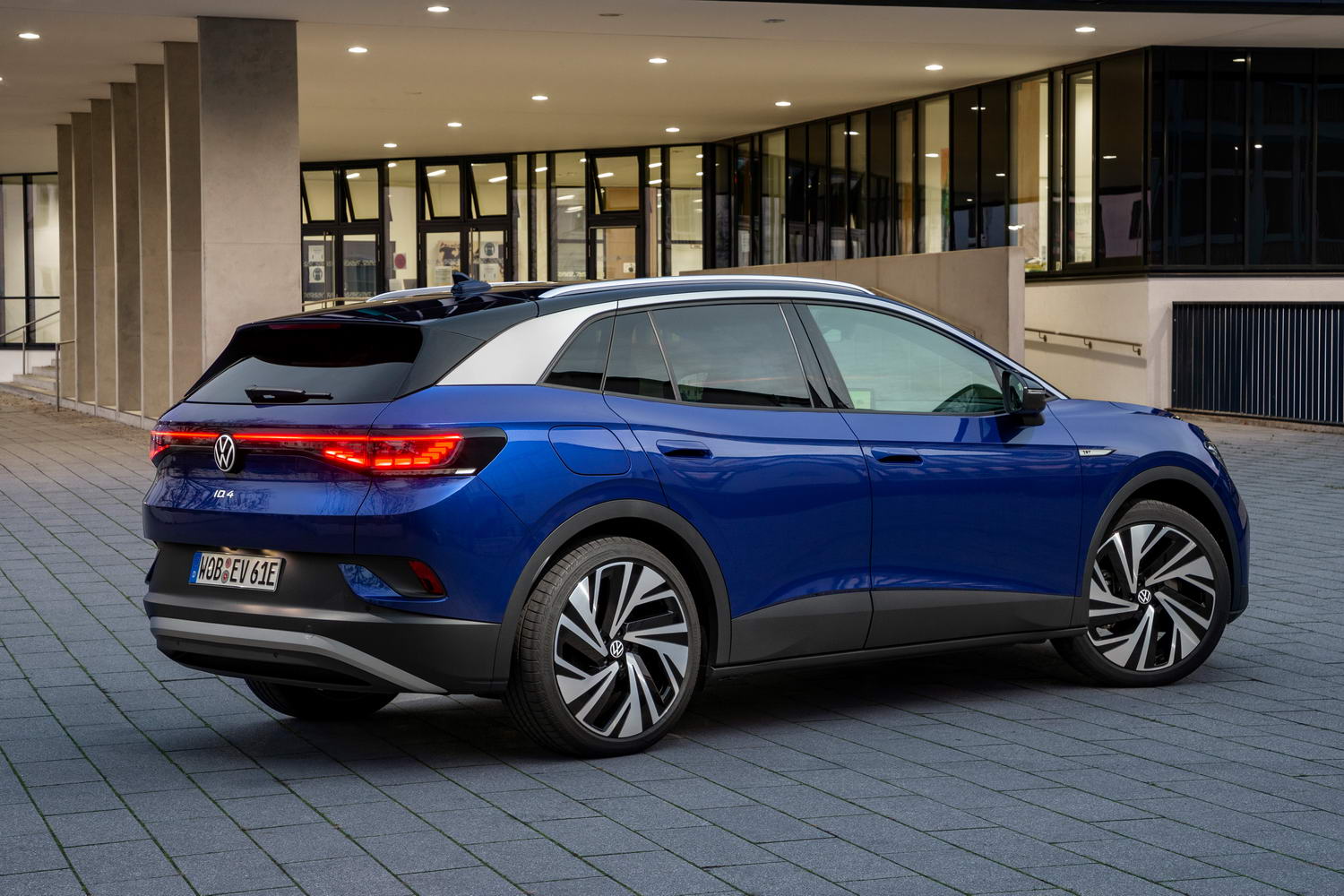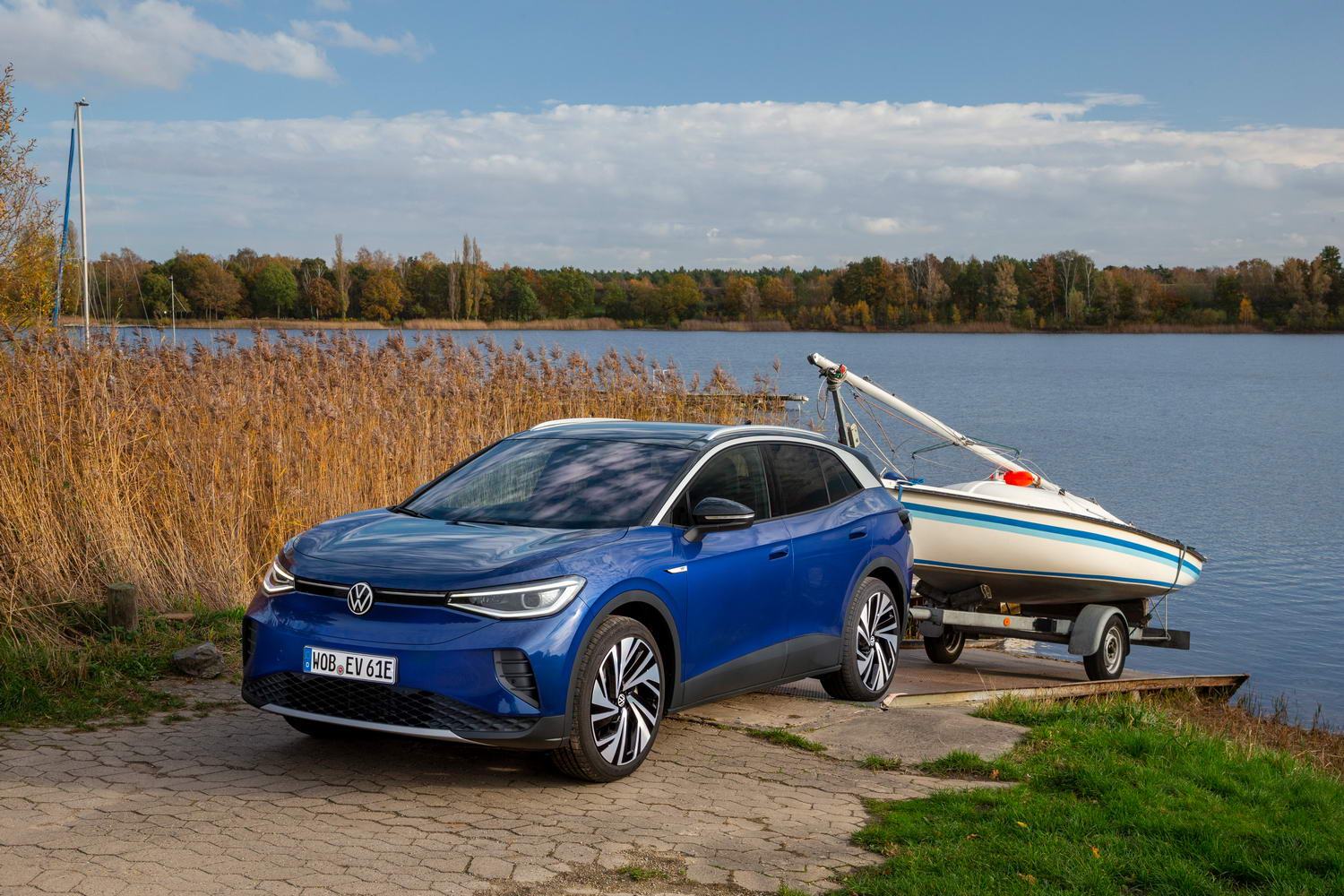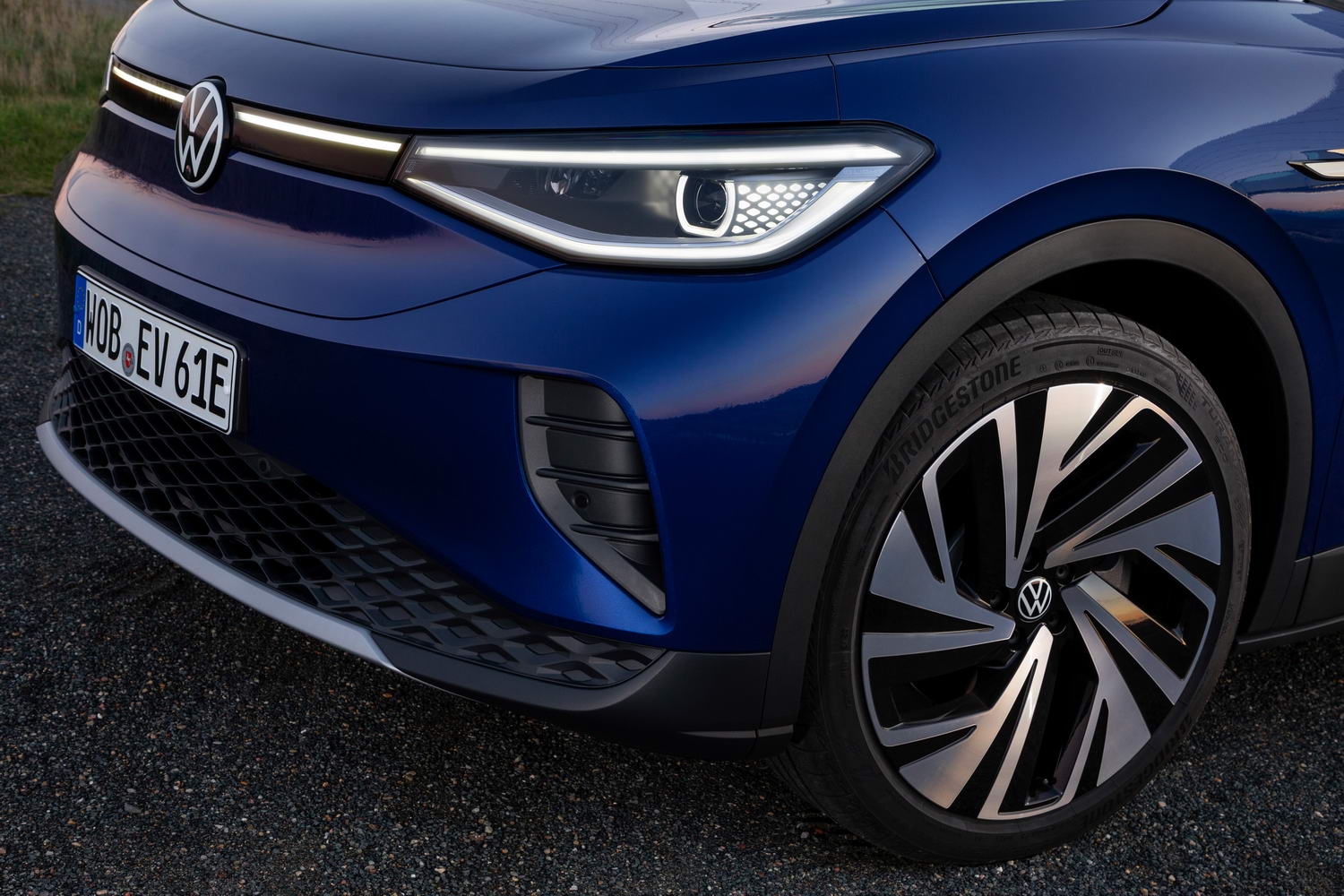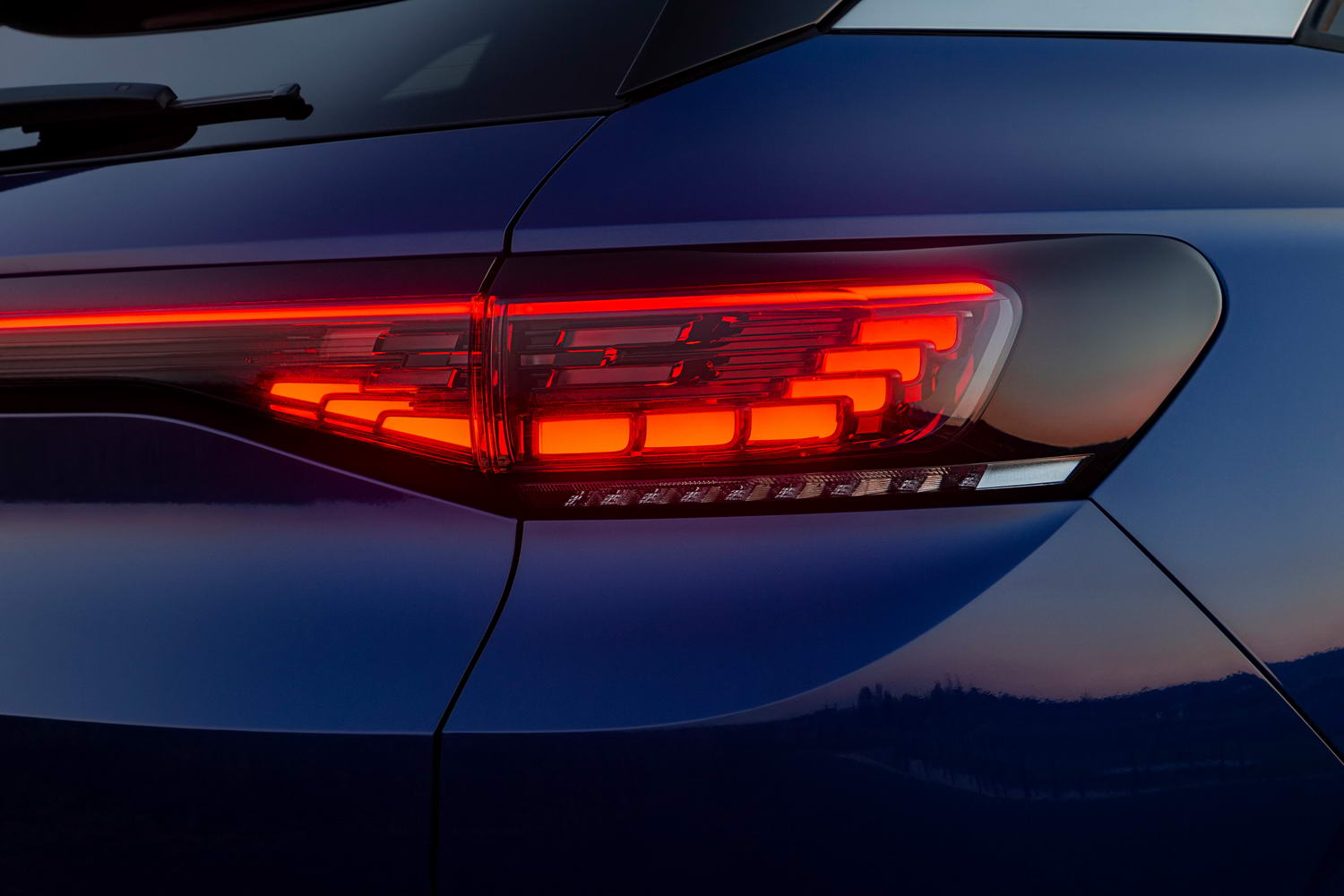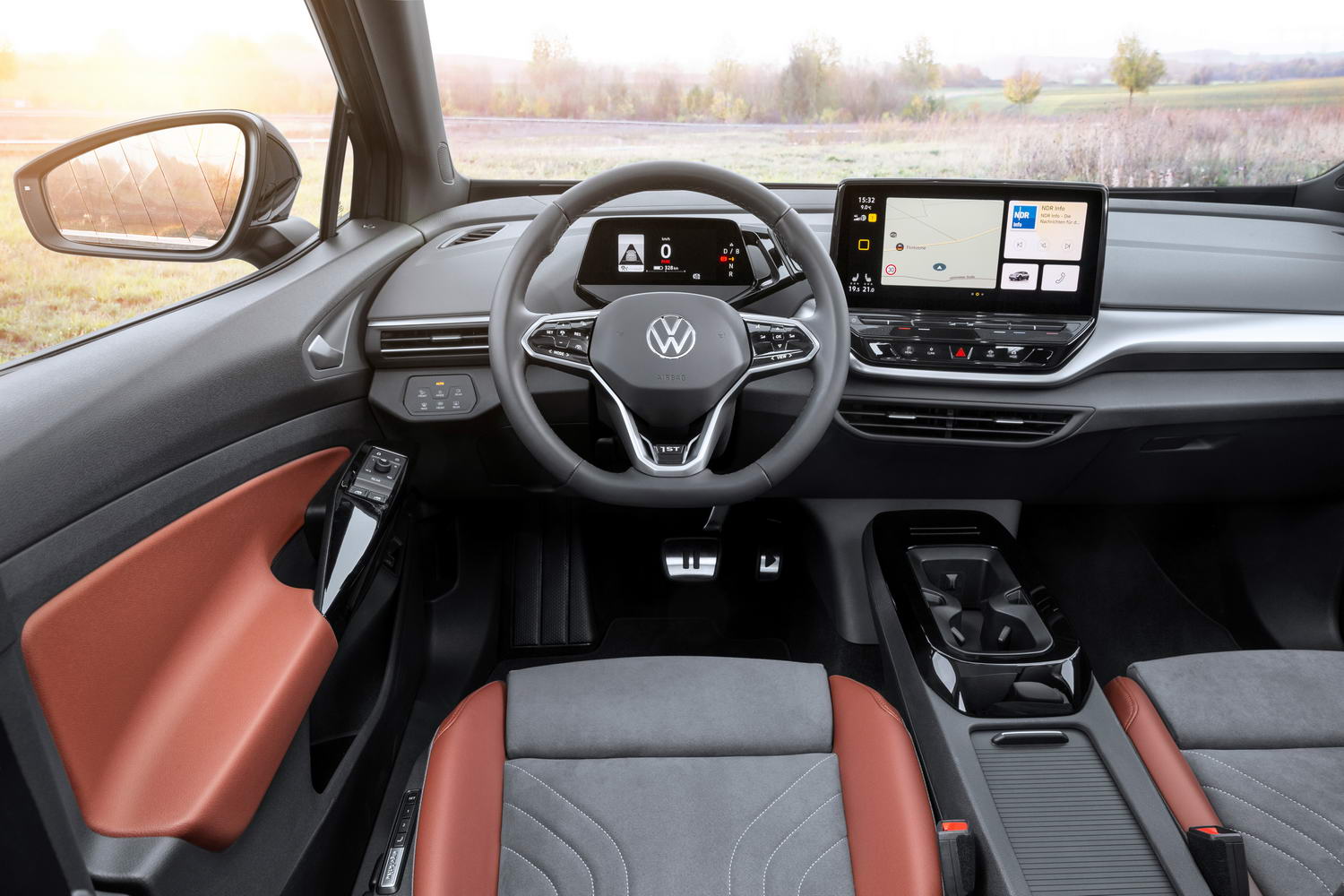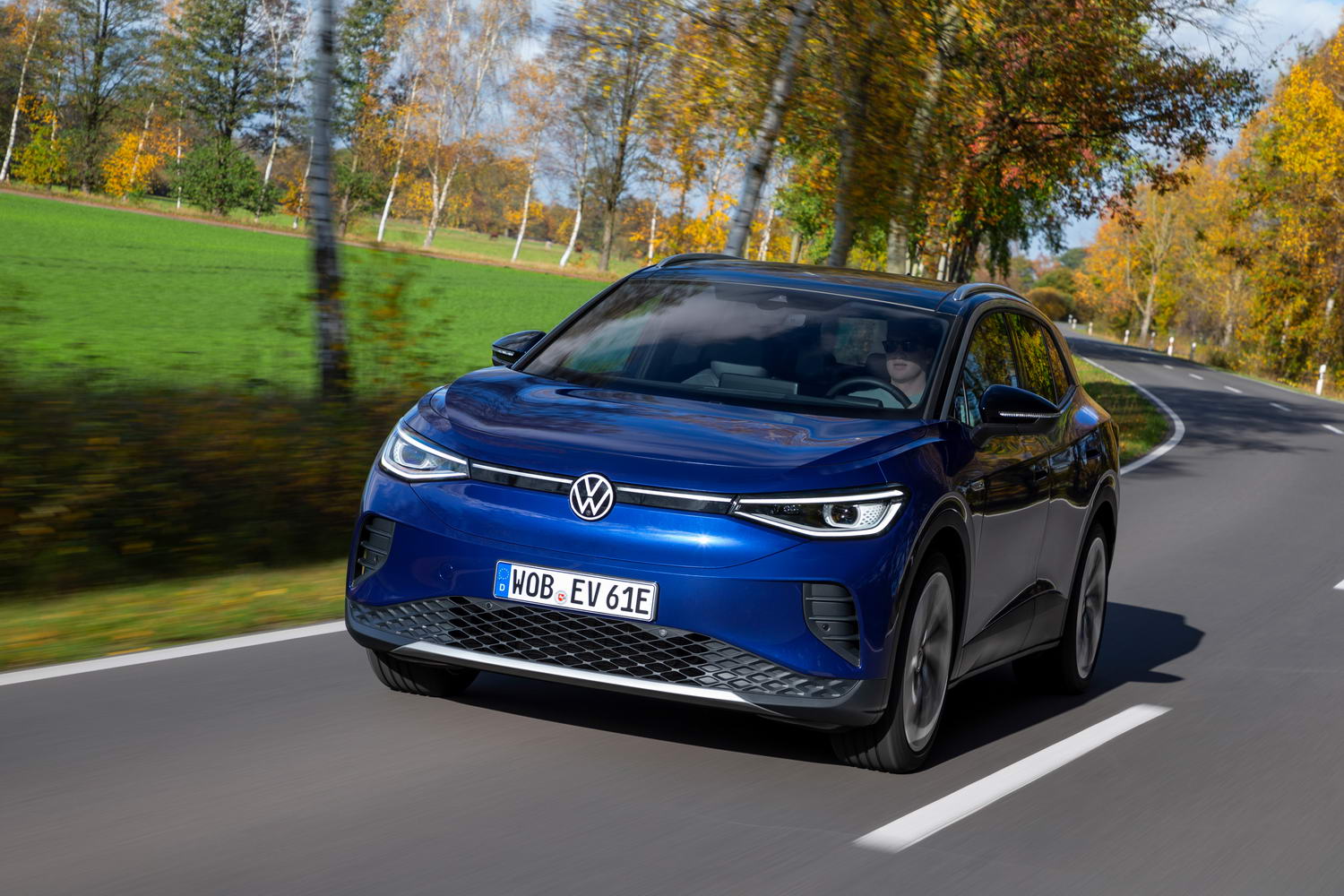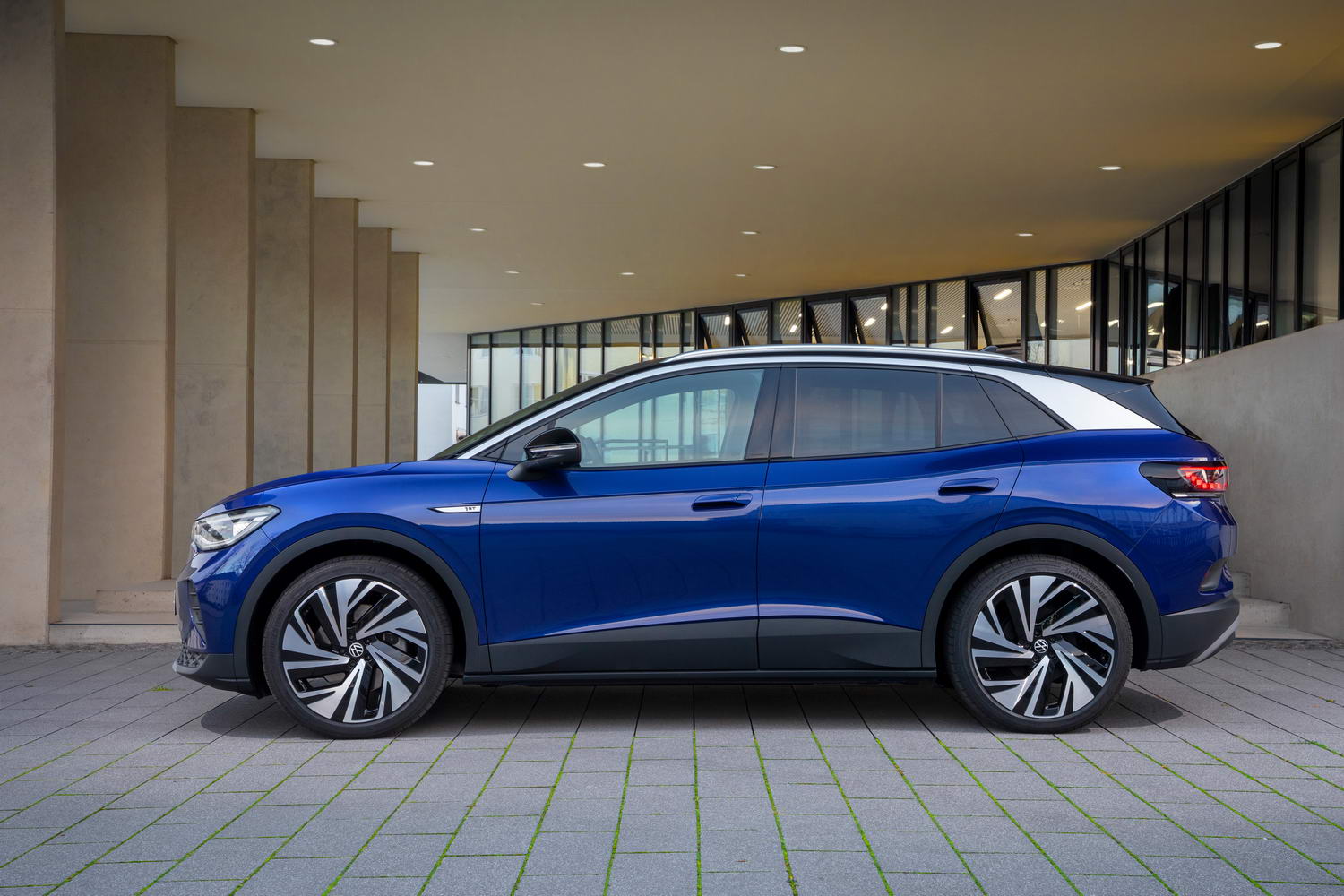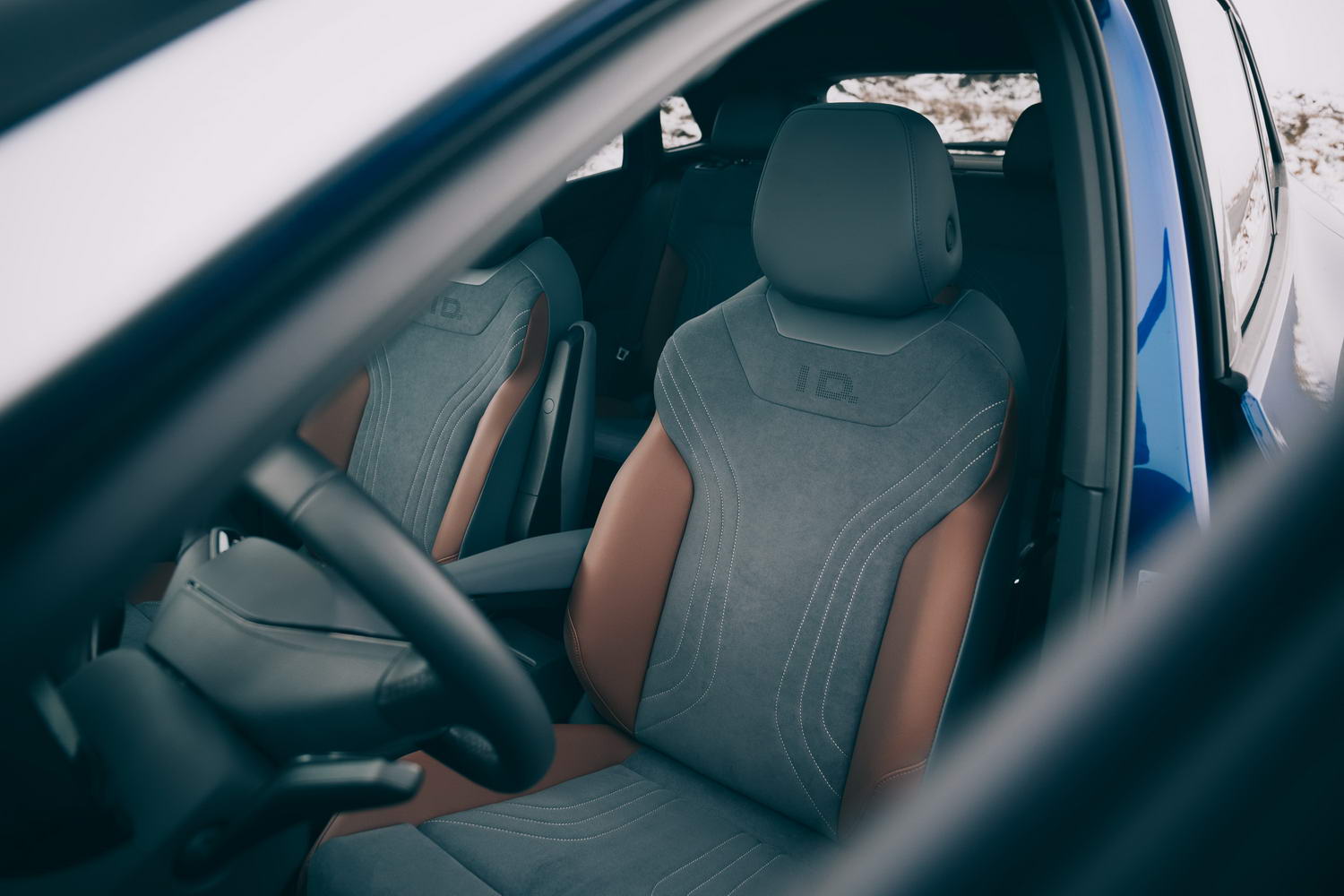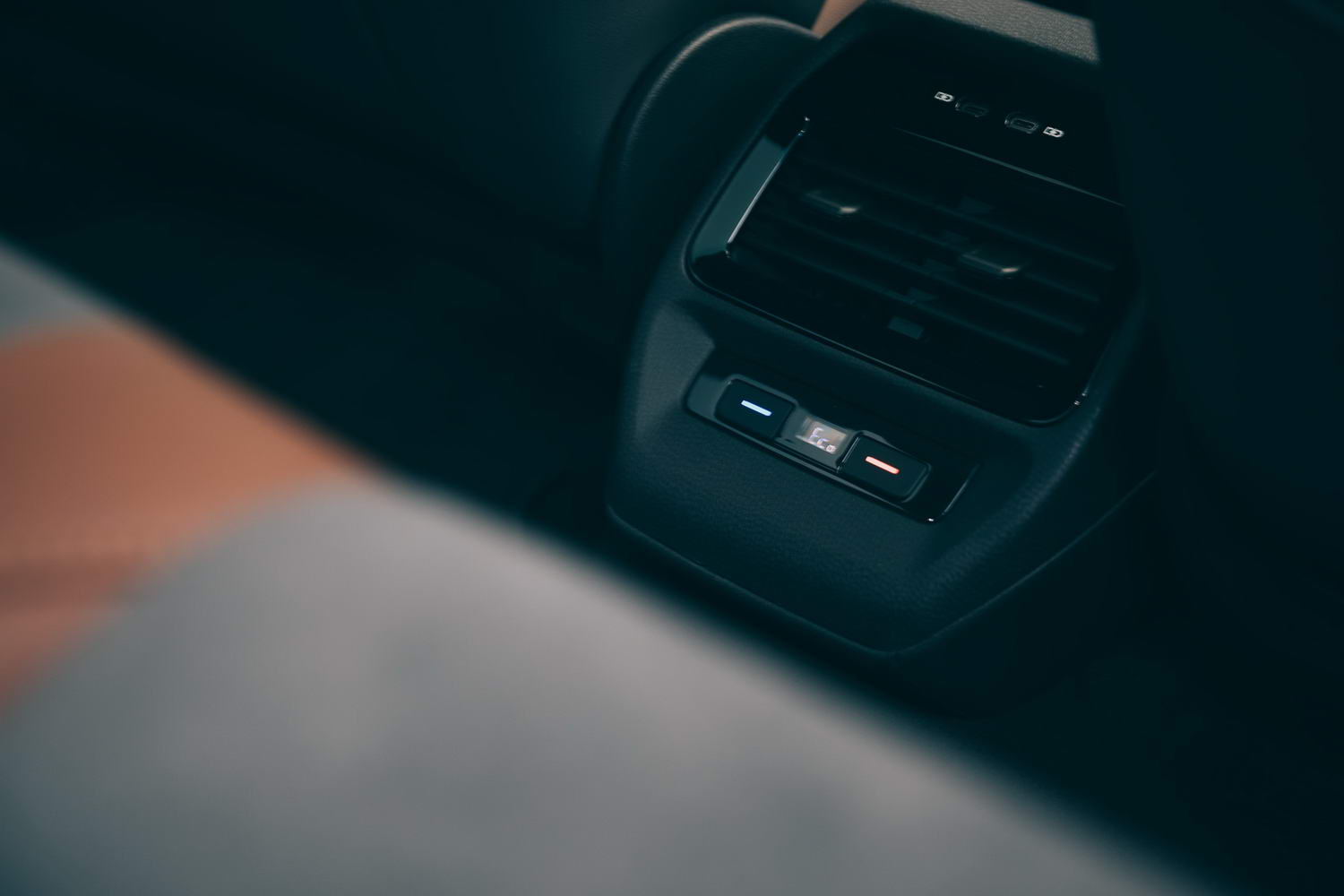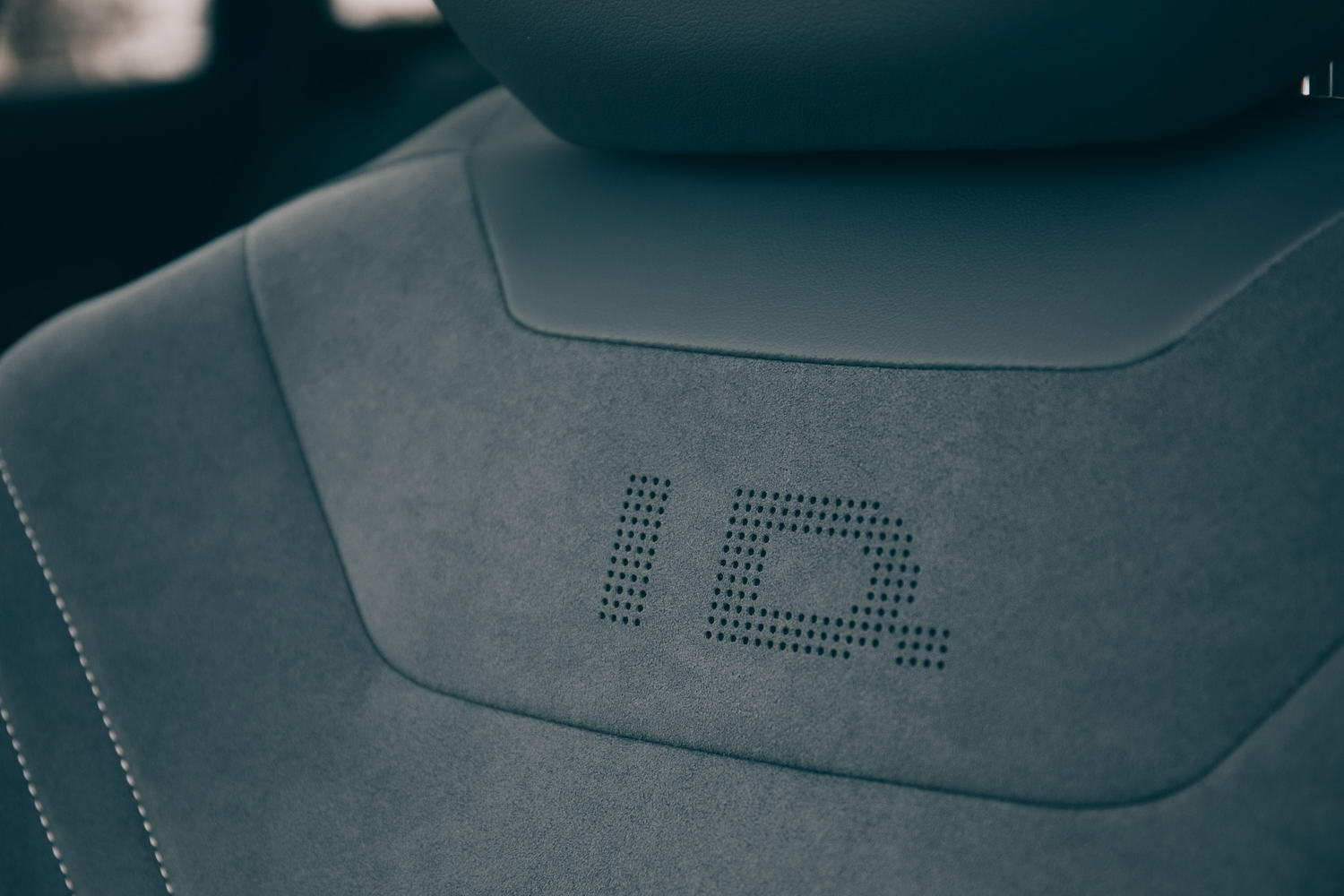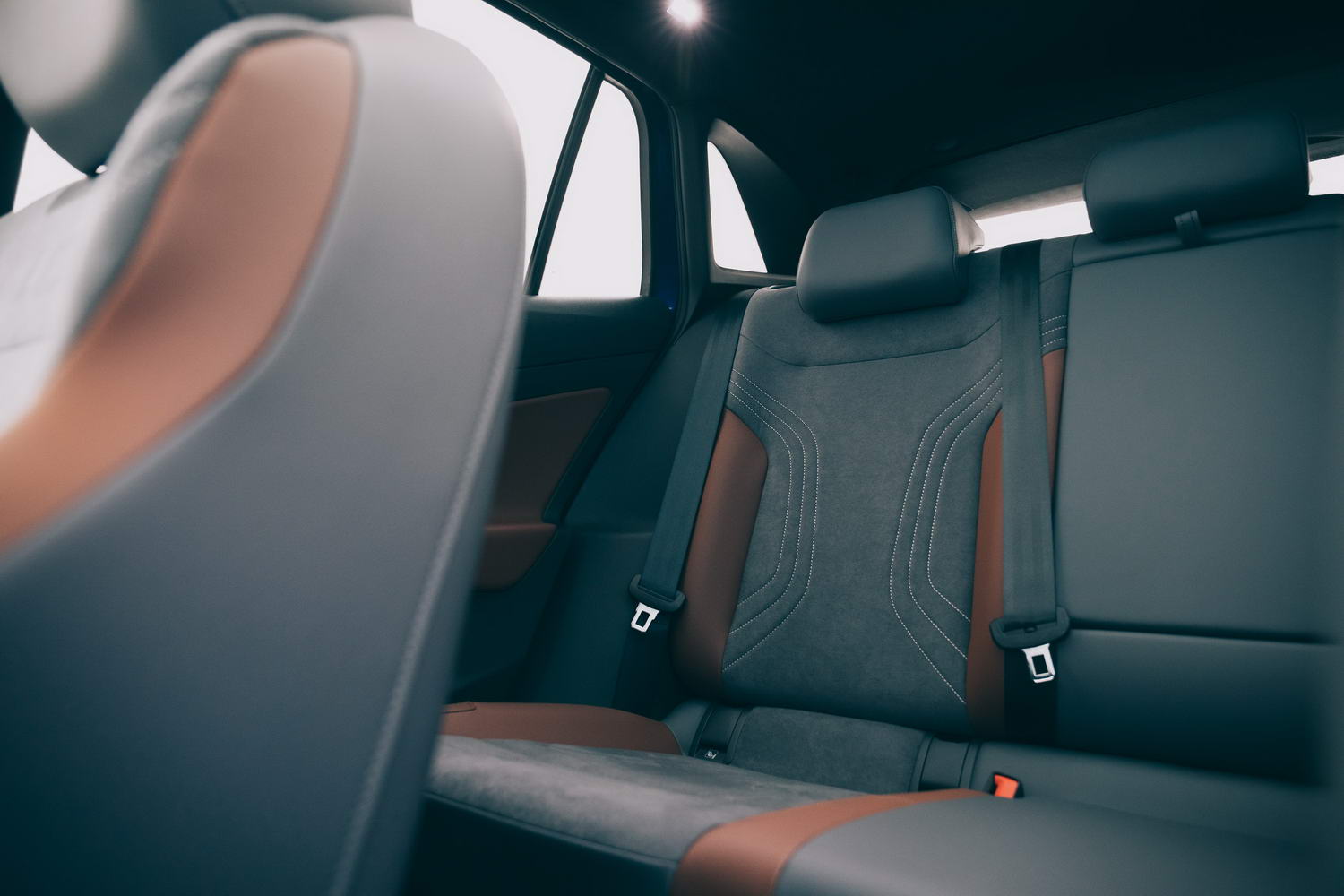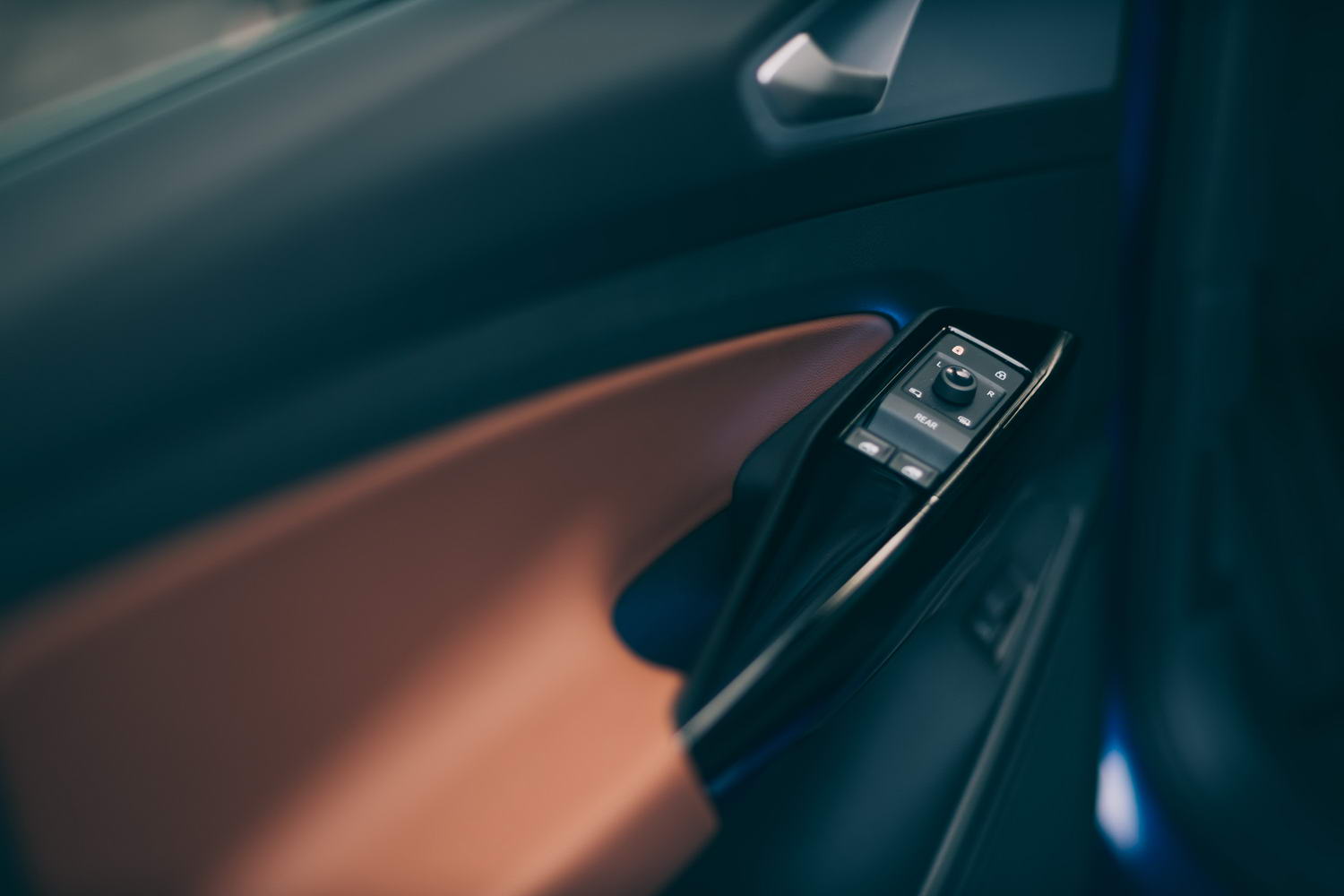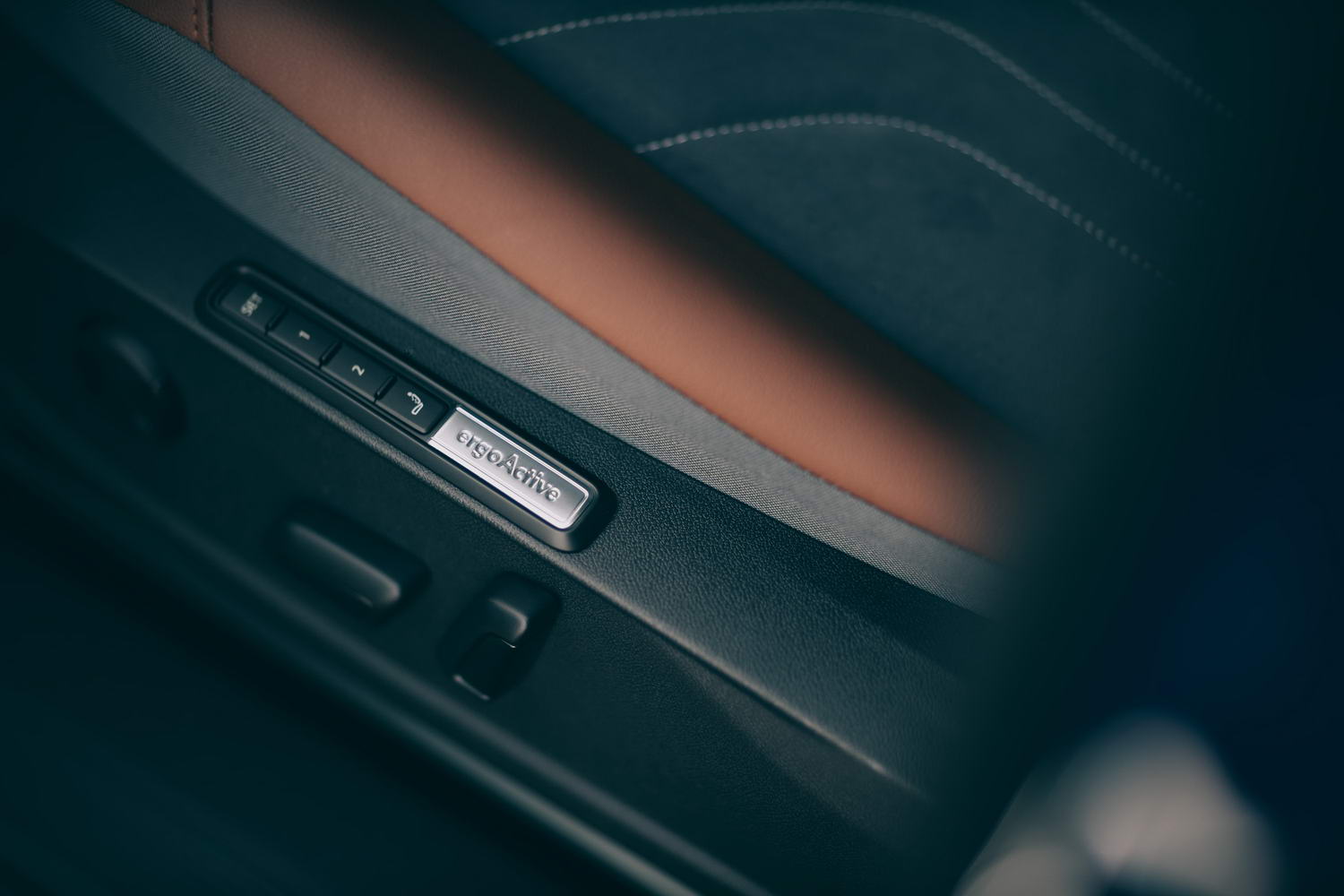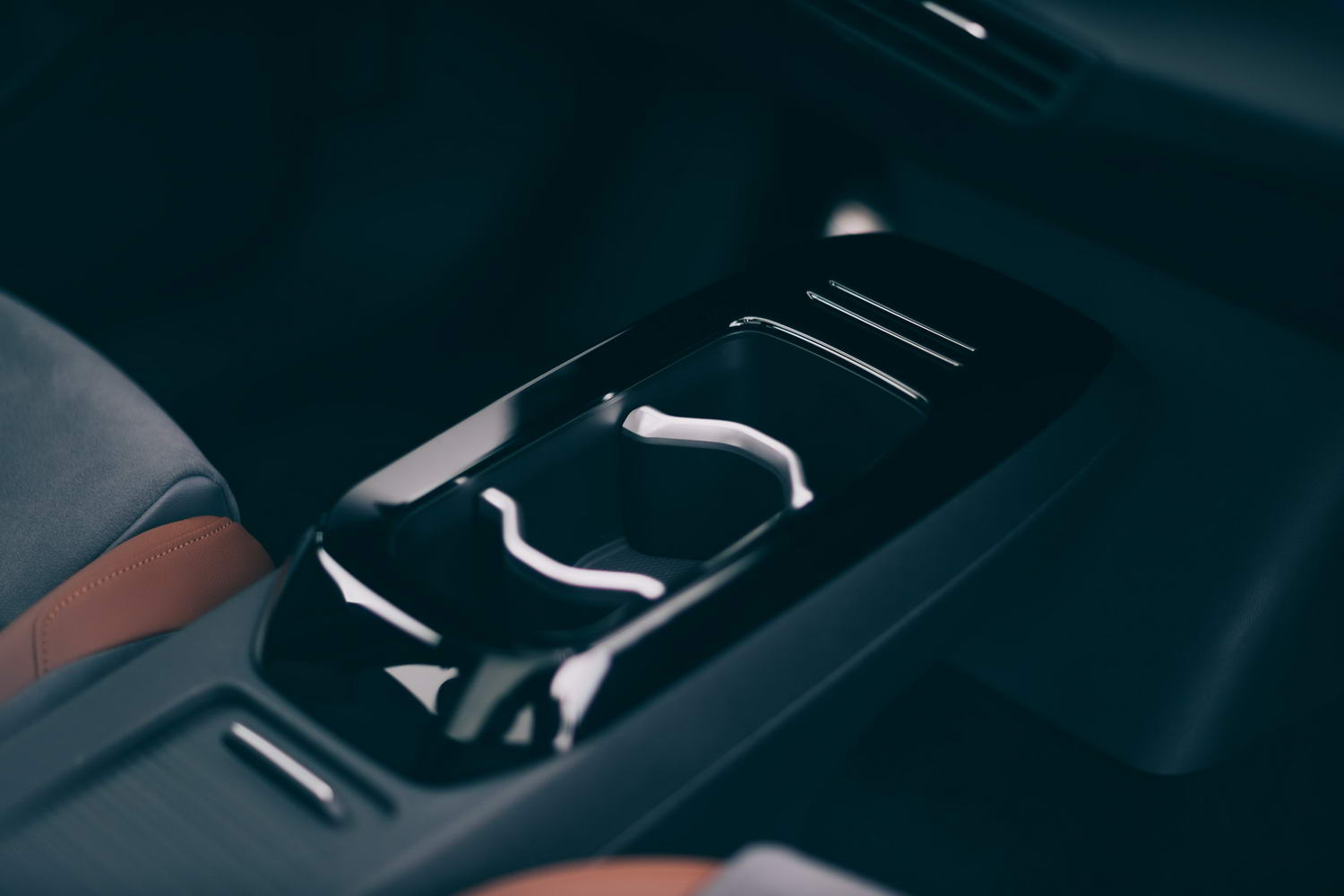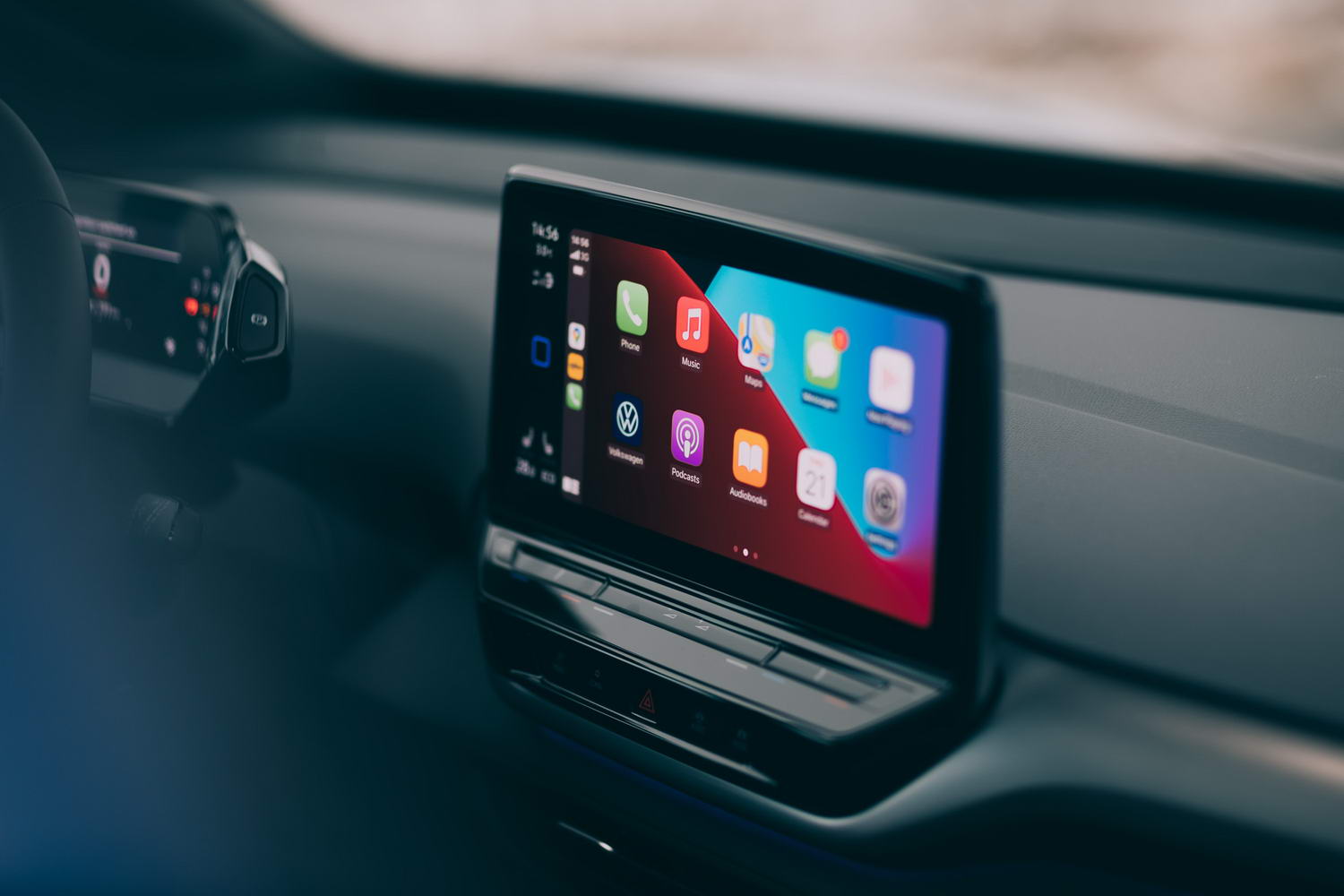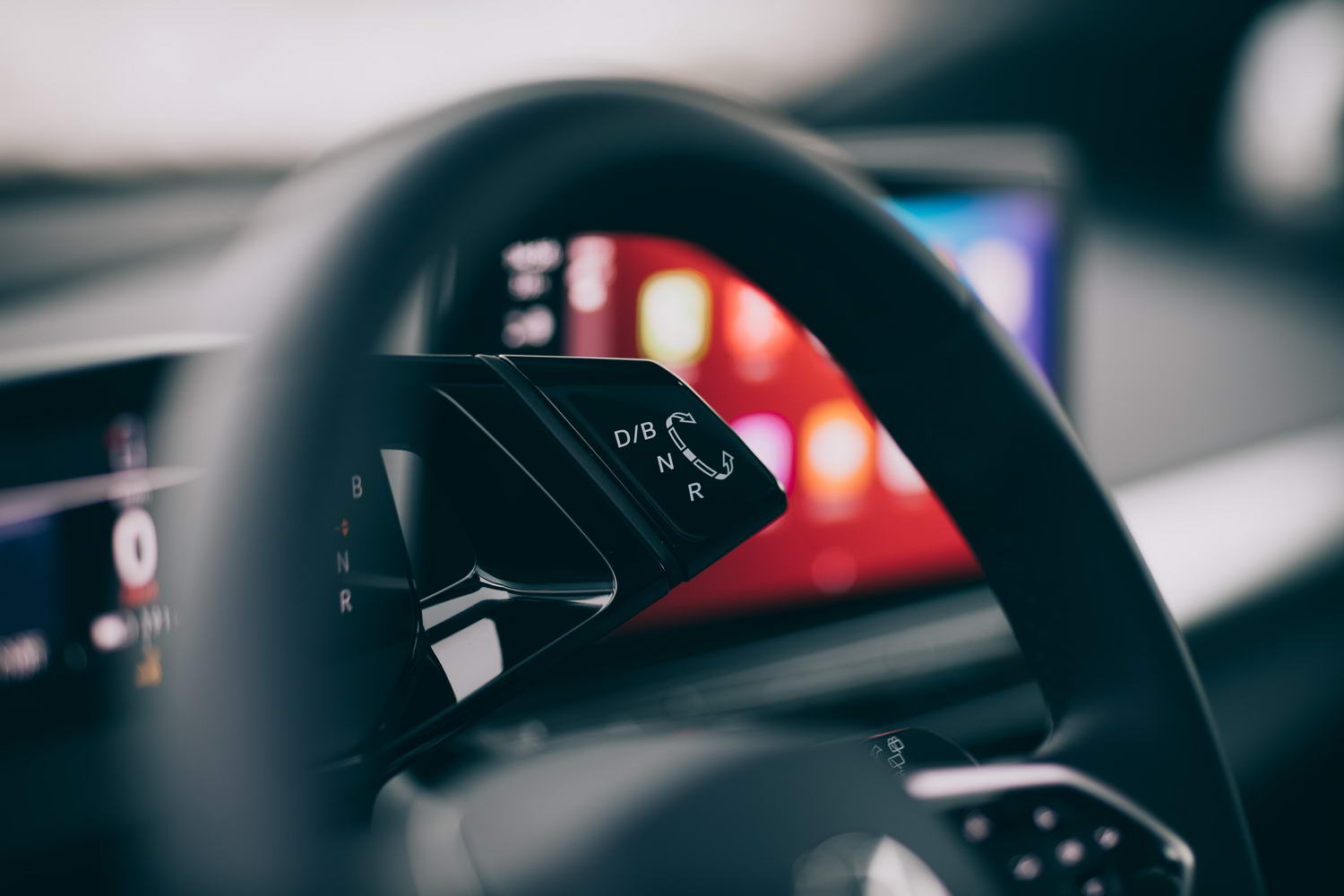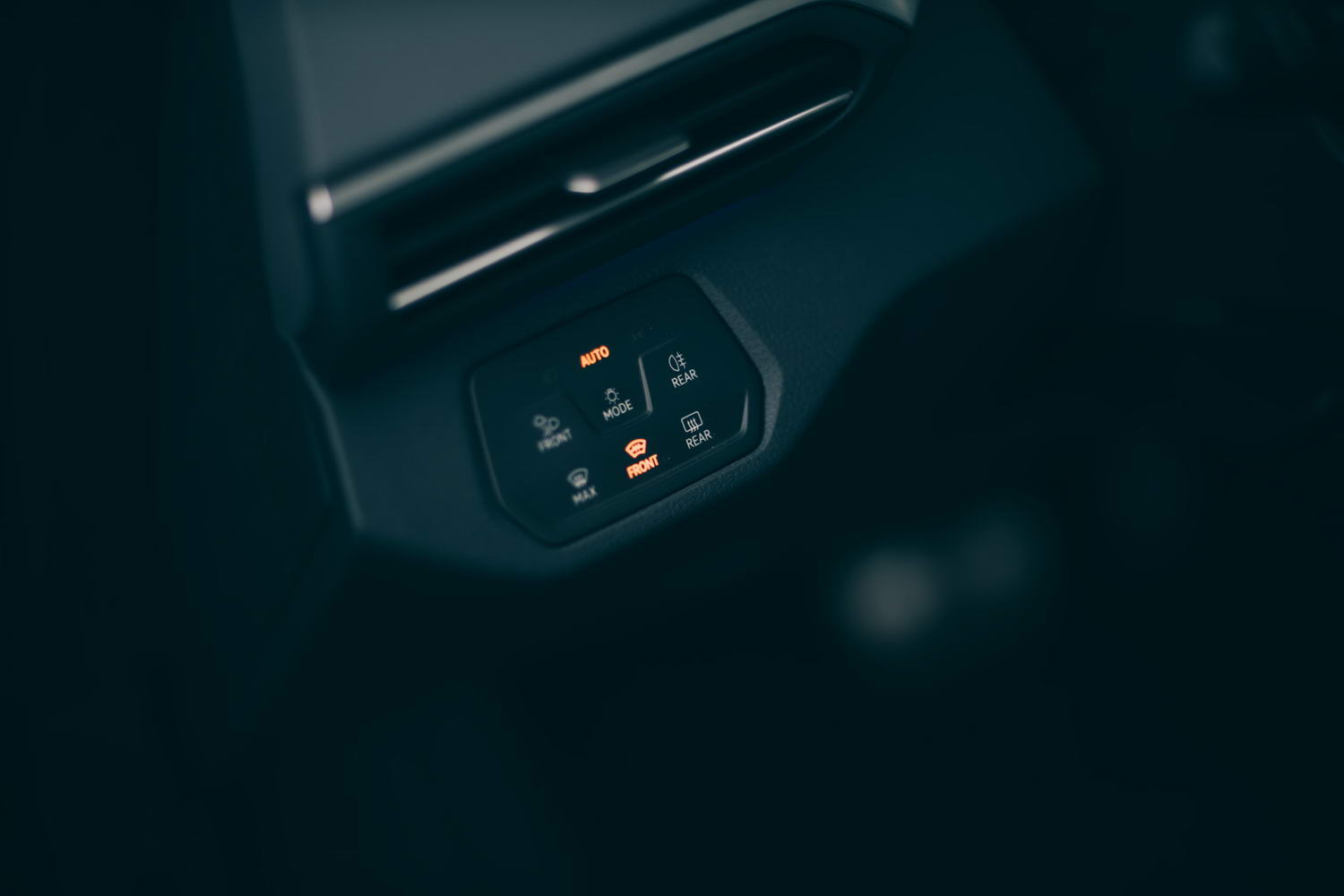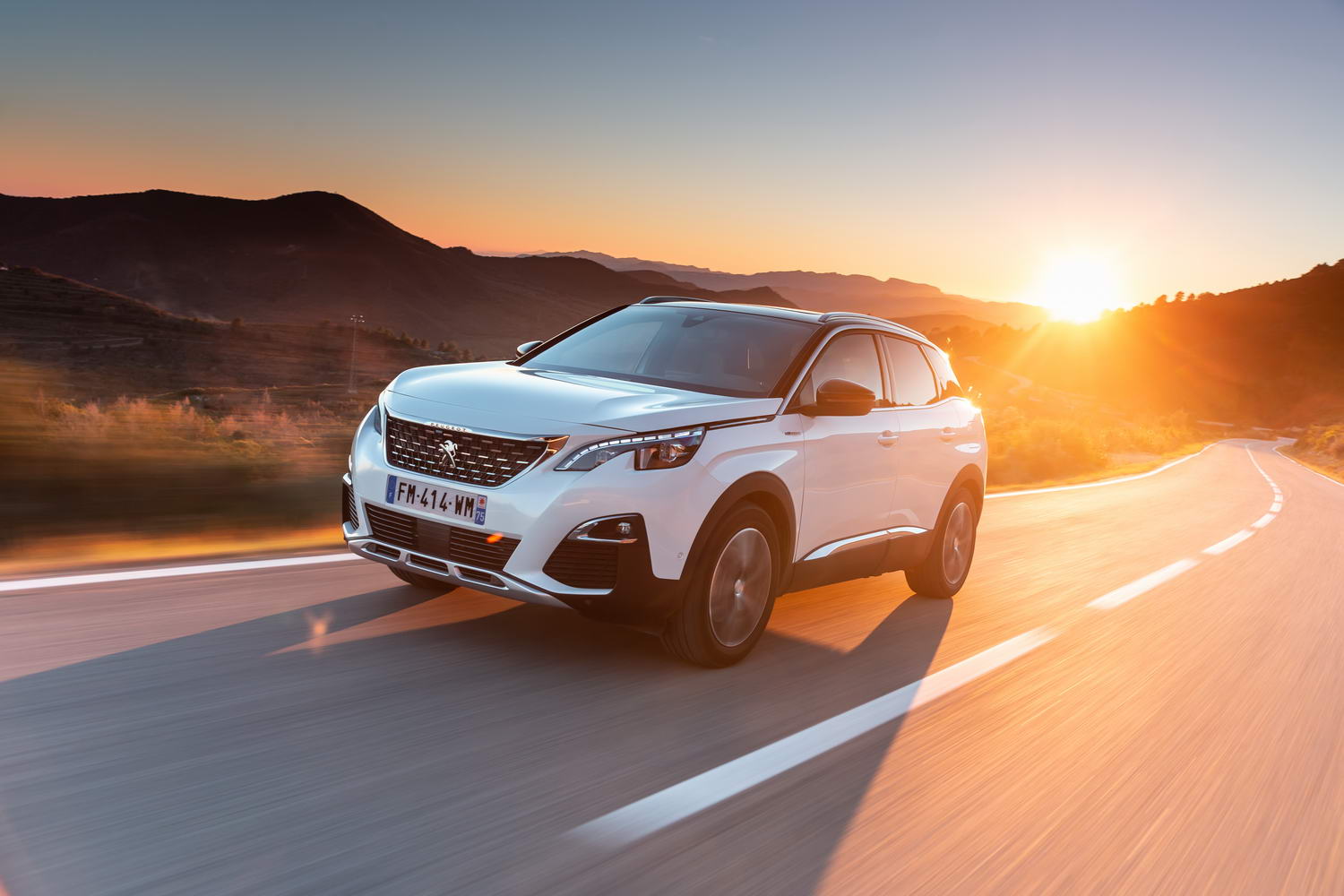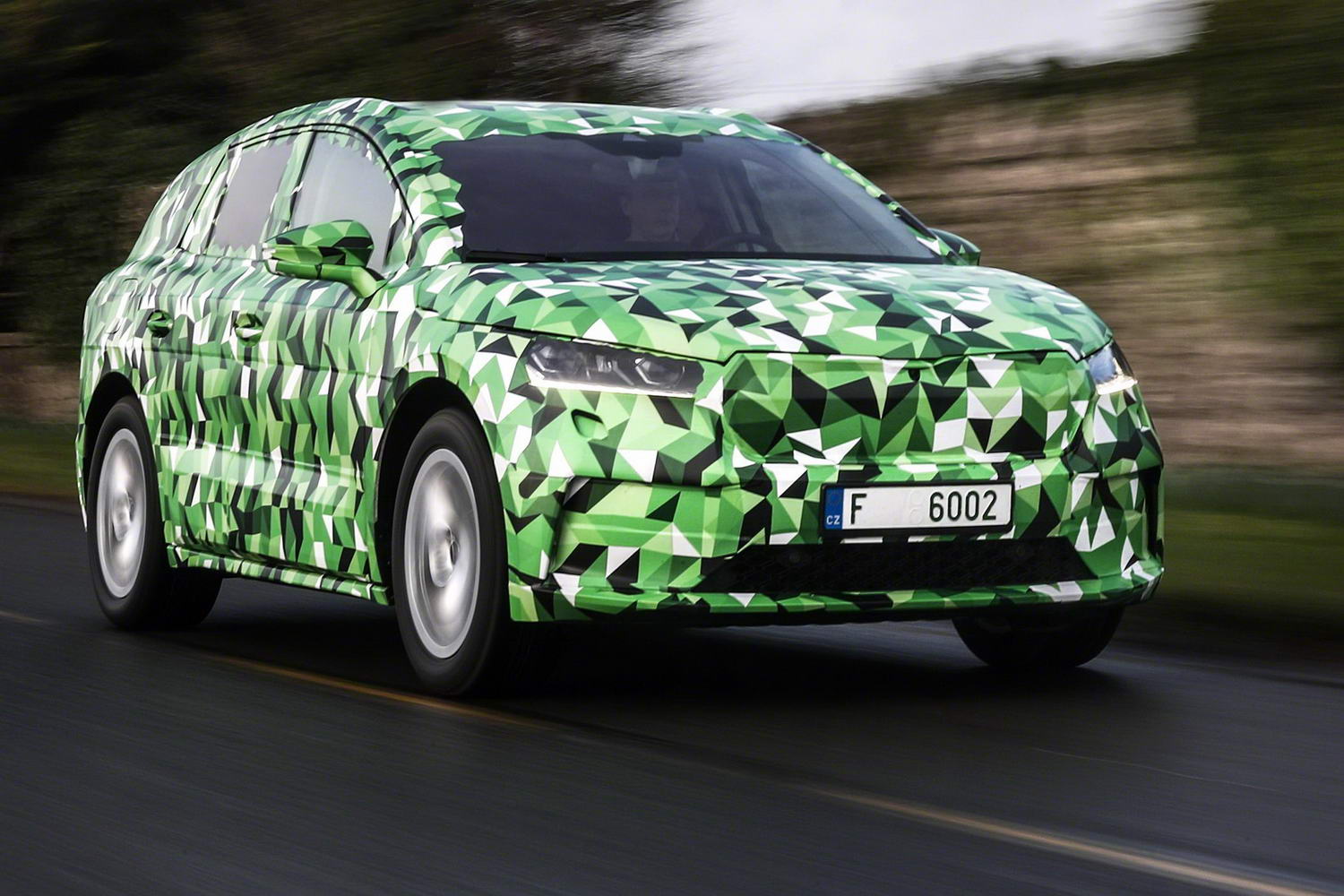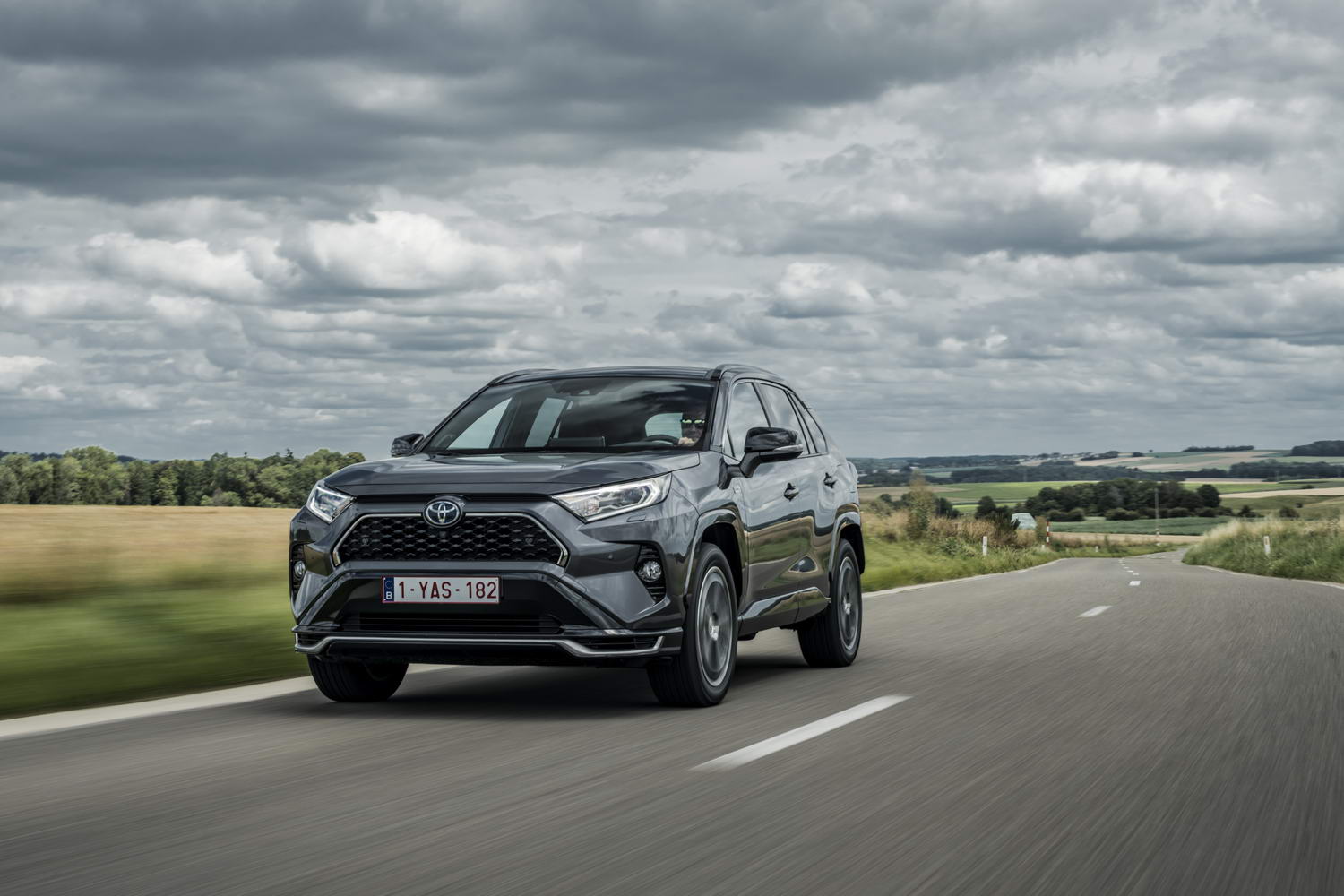Second of the new Volkswagen 'ID' models to hit the Irish market is the new ID.4. It's a five-seat SUV that physically sits between the Tiguan and Tiguan Allspace, though the ID.4 is only offered with electric propulsion. Nonetheless, with prices set to start in the mid-thirties, the ID.4 appears to have beaten any other electric car of the same size to market (except perhaps for its close relation, the Skoda Enyaq). None of that matters if the ID.4 isn't up to the lofty standards set by the VW badge on its front. Should family crossover buyers think twice before going for the default Hyundai Tucson or Nissan Qashqai this year?
In the metal
As mentioned above, the ID.4 sits between the regular Tiguan and the Allspace model in terms of its external dimensions. However, it looks hugely different, wearing the 'ID' design language, as previewed by the VW ID.3. It has translated well to the larger proportions, actually, looking less concept-car-like than initial glossy photographs might have suggested. It wears the black contrasting roof and door mirrors well, the glasshouse is defined by a matt silver style line and the overall height is hidden by the darkened lower section on the doors and bumpers. The size of the car is also disguised a little by the large alloy wheels pictured here. The Max model gets 21-inch rims, while the regular 1st Edition rides on 20s - and still looks good. The back of the ID.4 is defined by its LED lights and a full width light bar, while the downwards slope of the roof to the rear is extended by a distinctive spoiler add-on over the window.
At times, the ID.4 looks more like a tall estate car than an outright SUV, but step in and it feels more like the latter. There's a great sense of space in it, front and rear. And sure, the panoramic glass roof of the Max model enhances that, but passenger room is larger than you'll find in almost all the conventional crossovers. Up front, you sit relatively high up, though with loads of adjustment in the seating position, and there's no fear of bumping your elbow off your front-seat passenger.
The rear is more impressive again with buckets of headroom and oodles of legroom - in all three seating positions. While there are ISOFIX child seat mountings in the outer two seats only, the seat base itself is notably wide, and the centre position usefully flat, so it should be possible to fit three kids in there, depending on how bulky their seats or boosters are. They have a great, raised, view out as well. The rear seat backs split and fold down and, depending on the position of the movable boot floor, a completely flat cargo area can be created. Volkswagen quotes a boot volume of 543 litres when the seats are in use, which isn't quite as large as the Tiguan's, but a useful size all the same.
Back in the driving seat, you'll find a dashboard and switchgear straight out of the ID.3. Now, the early production version of the ID.3 that we tested last year exhibited some issues with all this, related to the system's software. It was buggy and at times slow to respond. In fact, it was one of the few disappointing aspects of the car. Volkswagen promised us that software updates would solve the issues and, while this ID.4 has updated software, apparently there are more improvements to come. Nonetheless, we found the ID.4's system vastly better. It responded crisply to input and quickly changed display and menu options. It looks great too, though will take those not used to touchscreen interfaces a little time to adjust. The only negative relates to the controls on the driver's door, which still don't work as slickly as we'd like, making it difficult to adjust the door mirrors and operate the rear electric windows. Hopefully, all that will be improved further in time.
Driving it
Naturally, the ID.4 is a heavier car than the ID.3 it shares its 204hp powertrain with, so reduced performance is to be expected, but in isolation it's more than quick enough. Certainly when compared with the diesel crossovers it's likely to replace in most households. It accelerates smoothly and serenely, pleasantly piling on speed rather than pinning your head back into the headrest. More importantly, it's quiet and refined. In fact, Volkswagen appears to have made the ID.4 even quieter and more civilised than the ID.3. No doubt the 'sound insulated' windscreen and double glazed side windows have something to do with it, as, even at motorway speed on wet roads, we found it superbly quiet. That's despite the fact that our test car rode on (usually noisier) winter tyres.
We won't be able to give final judgement on the ID.4's ride comfort and stability etc. until we drive a more representative car, as the test vehicle mixed the Max's superb adaptive damping system with smaller wheels than would be standard on that car (presumably to allow the fitment of winter tyres). Nonetheless, the overriding impression was that the chassis is beautifully polished, mingling family-friendly comfort, bump absorption and sound isolation with an overriding tautness. I don't mean to say it was firm on the road, but that its body and wheel movements are firmly controlled by the suspension, making the ID.4 genuinely enjoyable to drive, but not at the discomfort of your passengers.
The electric motor turns the rear axle, and its output can be used to balance the car through and out of a bend if you feel the need, though the traction and stability control systems are so fast-acting that you'll rarely sense more than a vague rear-lead attitude. It's extremely easy to drive, basically, while also managing to be surprisingly satisfying. Direct steering, strong brakes and great visibility all help with this, making this an electric SUV you might actually take out for a drive, just for the sake of it.
When you do, you'll theoretically get up to 500 kilometres of range from the 77kWh battery pack. We didn't have the chance to test that in our limited time with the car, so we'll have to report back on that at a later date. If it gets close to 400km at higher speeds, we'd be happy. Usefully, this battery pack can be charged at up to 125kW on DC fast chargers and up to 11kW at home.
What you get for your money
To date, pricing and specification details for the ID.4 have only been released for the 1st Edition models, called the ID.4 1st and ID.4 1st Max. On-the-road pricing, quoted by Volkswagen Ireland including the 23 per cent VAT rate, SEAI grant and VRT rebate, is €43,326 for the 1st and €56,565 for the 1st Max. That's a hefty premium, though the Max is laden with extra equipment, including electrically adjusted front seats, a 12-inch touchscreen, 21-inch alloy wheels, dual-zone climate control, electric windows all-round, panoramic glass roof, augmented reality head-up display, wireless phone charging, adaptive chassis control and much more.
Not that the regular ID.4 1st is found wanting. It gets heated front seats with unique upholstery, a heated 'sound insulating' windscreen, auto lights and wipers, power folding door mirrors, 20-inch alloy wheels, roof rails, 10-inch touchscreen with Discover Pro navigation system, keyless start, four USB-C ports, adaptive cruise control, Apple CarPlay and Android Auto, front and rear parking sensors, rear-view camera and a huge number of active safety functions as standard.
Volkswagen Ireland expects 1,700 sales of the ID.4 in 2021, 700 of which will be the 1st Editions (80 per cent of which will be the regular 1st). At the time of writing, 350 have already been reserved by buyers and first deliveries are expected by April. About a month later, the regular range comes on stream. We don't have full details of that as yet, but we've been told that the entry-level model will be under €36,000 after grants. It will get a 52kWh battery and its power output will be 148hp.
Summary
Thanks to the ID.3, we knew what to expect of the new Volkswagen ID.4, but even so, it feels like a better resolved car all-round. It's spacious, seems of high quality, drives exceptionally well, and is priced remarkably well for one of the first electric family SUVs of its size to hit the Irish market. It's set to do well for Volkswagen and gives everyone else something to aim for.

